Barcelona’s Gothic Quarter is the oldest section of the city, with ruins dating back to the Roman Empire. Narrow cobblestone lanes, wonderful to explore on foot, wind through the quarter past varied architecture. Although most of the buildings appear medieval, many actually were built in the late 1800s and early 1900s as part of a renovation project aimed to improve tourism, particularly for the 1929 International Exposition.
After attending the Spanish Grand Prix, we spent a few days in Barcelona taking in the sights. We changed hotels to the Almenac Barcelona for this portion of the trip, to a beautiful room with a large terrace overlooking the intersection of Gran Via de les Corts Catalanes and Rambla de Catalunya and a view to the famous landmark, La Sagrada Familia.
Roughly following an itinerary from the Creative Adventurer, our first stop was a short walk from our hotel at Plaza Cataluna. The vast sculpture-laden public space was built at the convergence of nine streets as the central meeting point for the 1929 Expo. We explored the plaza, stopped in at the tourist information center there to pick up some train tickets we’d pre-ordered, and had lunch at nearby Restaurant Nineteen, built against the side of 13th-century Esglesia de Santa Anna.
After lunch, we walked past the 14th-century Font de Santa Anna de Barcelona en route to Placa Nova. In the bustling and tourist-filled square, where Roman ruins mingle with one of Pablo Picassos’ largest works. Prominent in the Placa Nova is the Cathedral of Barcelona, built between 1298 and 1420. The interior is absolutely spectacular, and visitors also can take a small elevator to the roof for sweeping views of the city and close-ups of the famous gargoyles.
Leaving the cathedral, we passed Josep Llimona’s sobering Monument to the Heroes of 1809 that captures the final moment of the Five martyrs of Catalan Freedom before they were executed for rising against Napoleonic rule. Passing along narrow Carrer de Sant Sever, we stopped for a drink in cafe at Plaça de Sant Felip Neri, once the home of the shoemaker’s guild. In 1937, the square was the site of the second-worst bombing in Barcelona during World War II, where 42 people, including 20 children were killed. The walls have been left unrepaired as a reminder of the event.
One of Barcelona’s most famous bridges is the tiny Pont del Bisbe (Bishop’s Bridge), built in the 1920s in Gothic style to connect Parliament buildings to the presidential residence. Nearby, the 14th-century buildings along Carrer de la Pietat, directly behind the Cathedral of Barcelona, were built in a myriad of architectural forms, including a Renaissance facade with stucco tromp d’oeil patterns. A short distance away is the nearly-hidden ruins of the Roman Temple of Augustus.
The huge Plaça de Sant Jaume, southeast of the cathedral, was a major meeting point in Roman Times and for centuries has been the center of government for the city of Barcelona and surrounding Catalonia. Facing the square is Barcelona City Hall and the 13th-century Palau de la Generalitat (Parliament of Catalonia). Just off the square is the Monument als Castellers, an homage to the castellers, acrobats who stand on top of each other to form a human tower. Just north of Plaça de Sant Jaume is Placa de Sant Just, where 14th-century Font de San Just draws from the oldest water source in the city. And directly east of the cathedral is Placa del Rei, with authentic gothic and medieval buildings, including the 16th-century Palau del Lloctinent (Lieutenant’s Palace).
14th-century Basilica de Santa Maria del Pi is known for it’s large rose window, a 1940 reproduction of the original that was destroyed in a fire. The church also has a distinctive octagonal bell tower that is prominent in the Barcelono skyline.
We left the Gothic Quarter on our way to take in that city skyline at Terrace 360, a rooftop bar atop the hotel Barcela Ravel. We walked along the iconic and pedestrian-filled La Rambla boulevard towards the huge Mercado de La Boqueria public market. The market was closed for day, but several adjacent restaurants were humming. We also passed the 13th-century convent built at Plaza de Sant Agusti Vell. The views from Terrace 360 were fabulous, and we really enjoyed this stop.
Our route to dinner along La Rambla took us past one of Barcelona’s most famous and loved sculptures, El Gat de Botero (Botero’s Cat), by Columbian artist Fernando Botero. After an exceptional tapas dinner at Cera 23, we returned back to our hotel along La Rambla. Barcelona is a late-night city, with many restaurants not even opening for dinner until 8pm. As we walked home at nearly 9pm, many food vendors were still open and operating late into the evening.
We finished the day with a dusk drink at the rooftop bar in our hotel, the Almenac Barcelona, that we finished before the firepit on our room’s terrace.
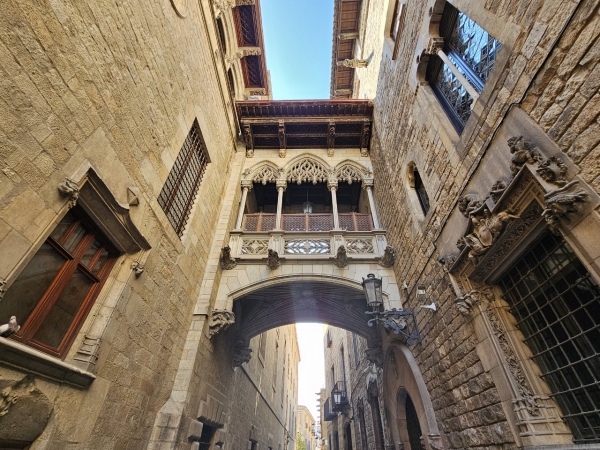
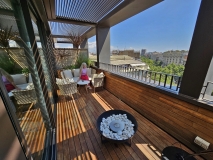
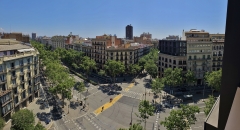
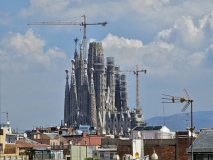
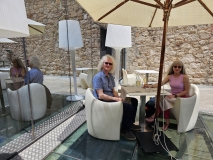
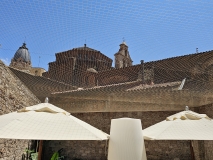
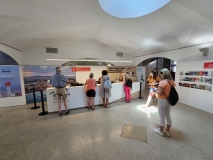
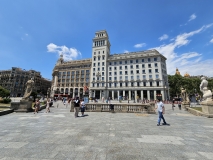
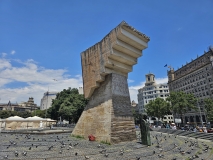
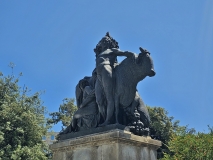
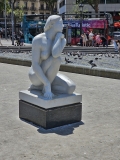
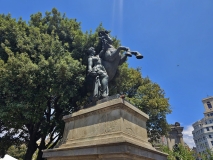
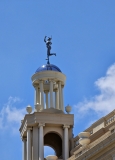
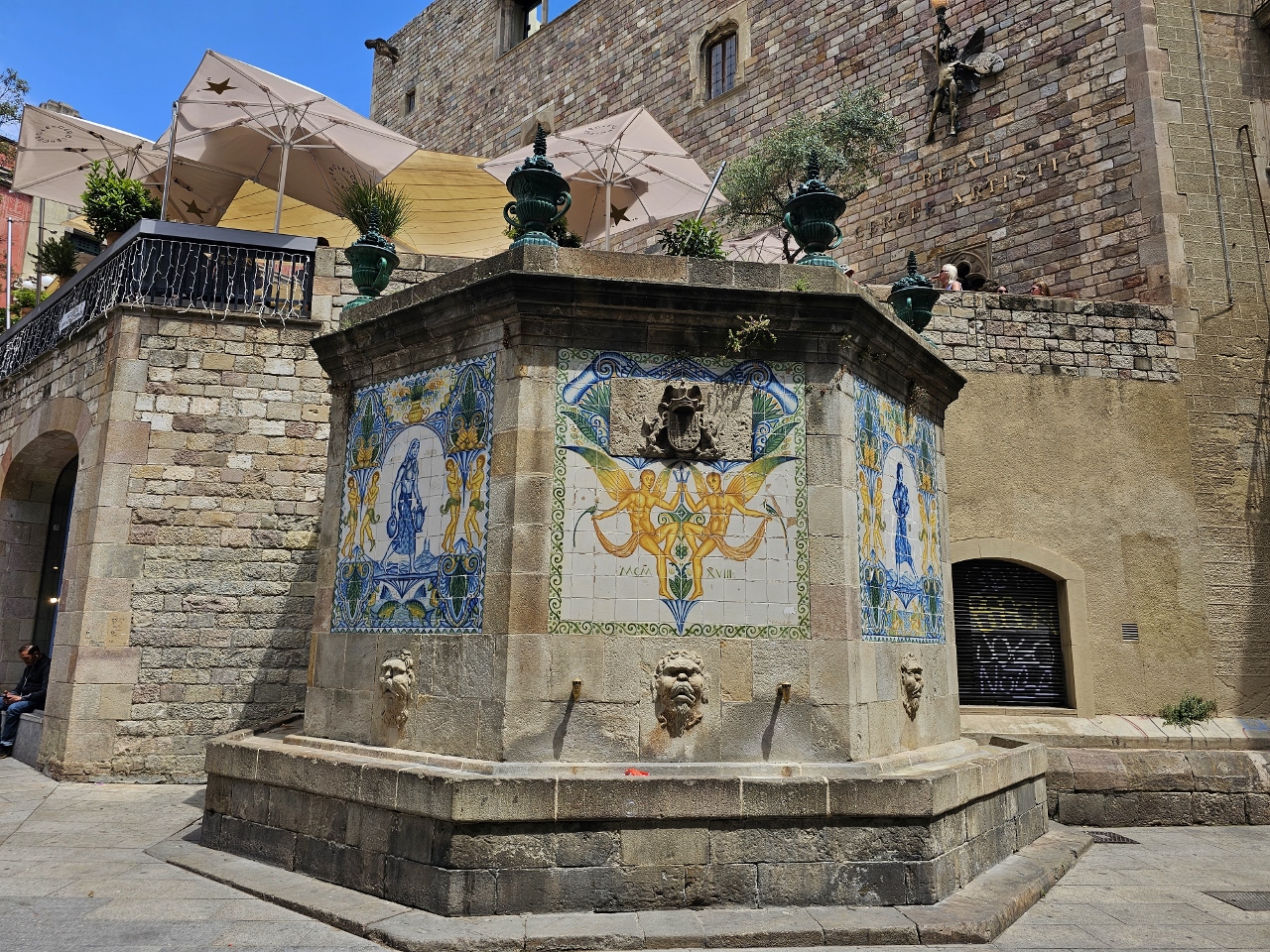
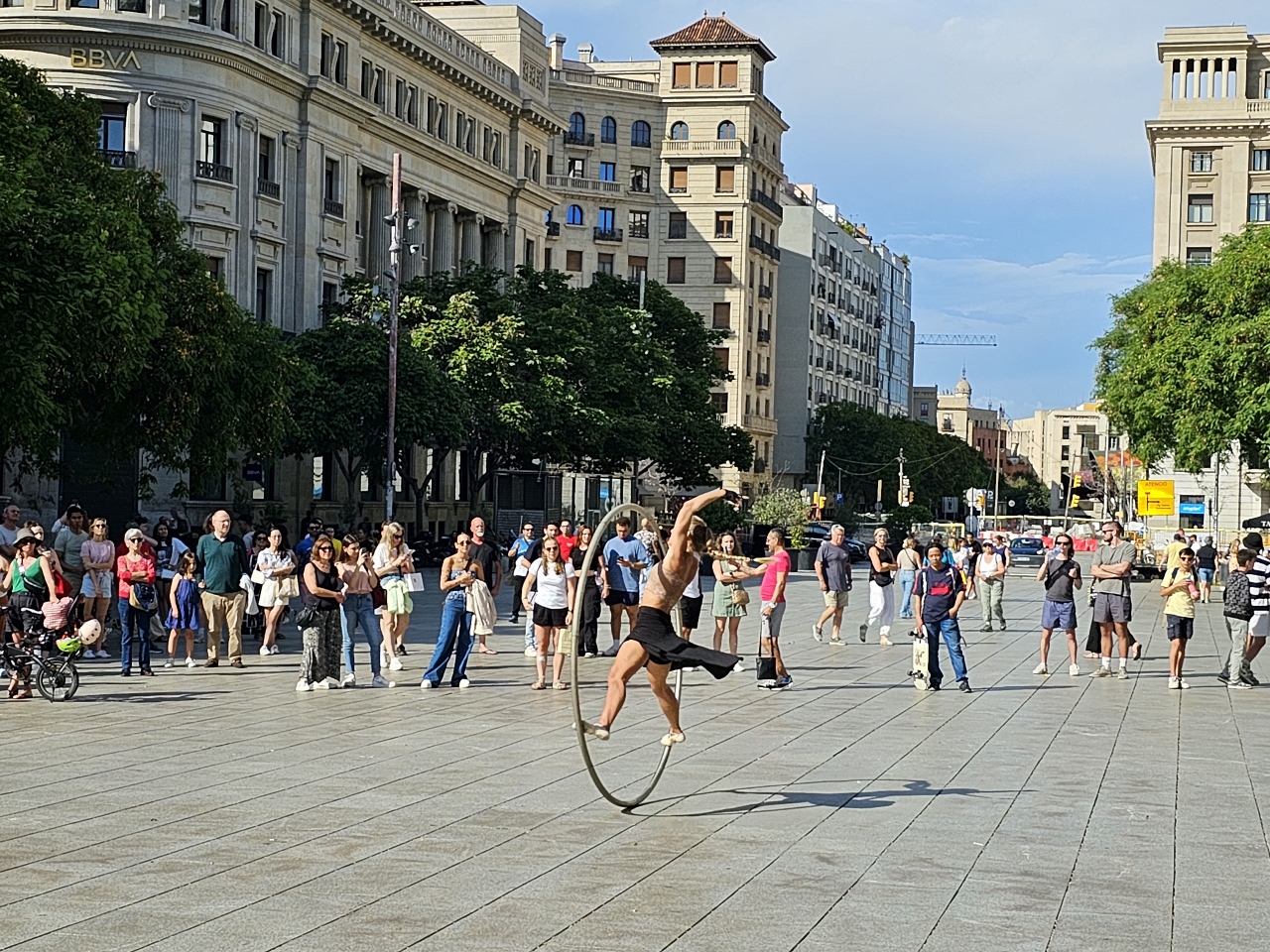
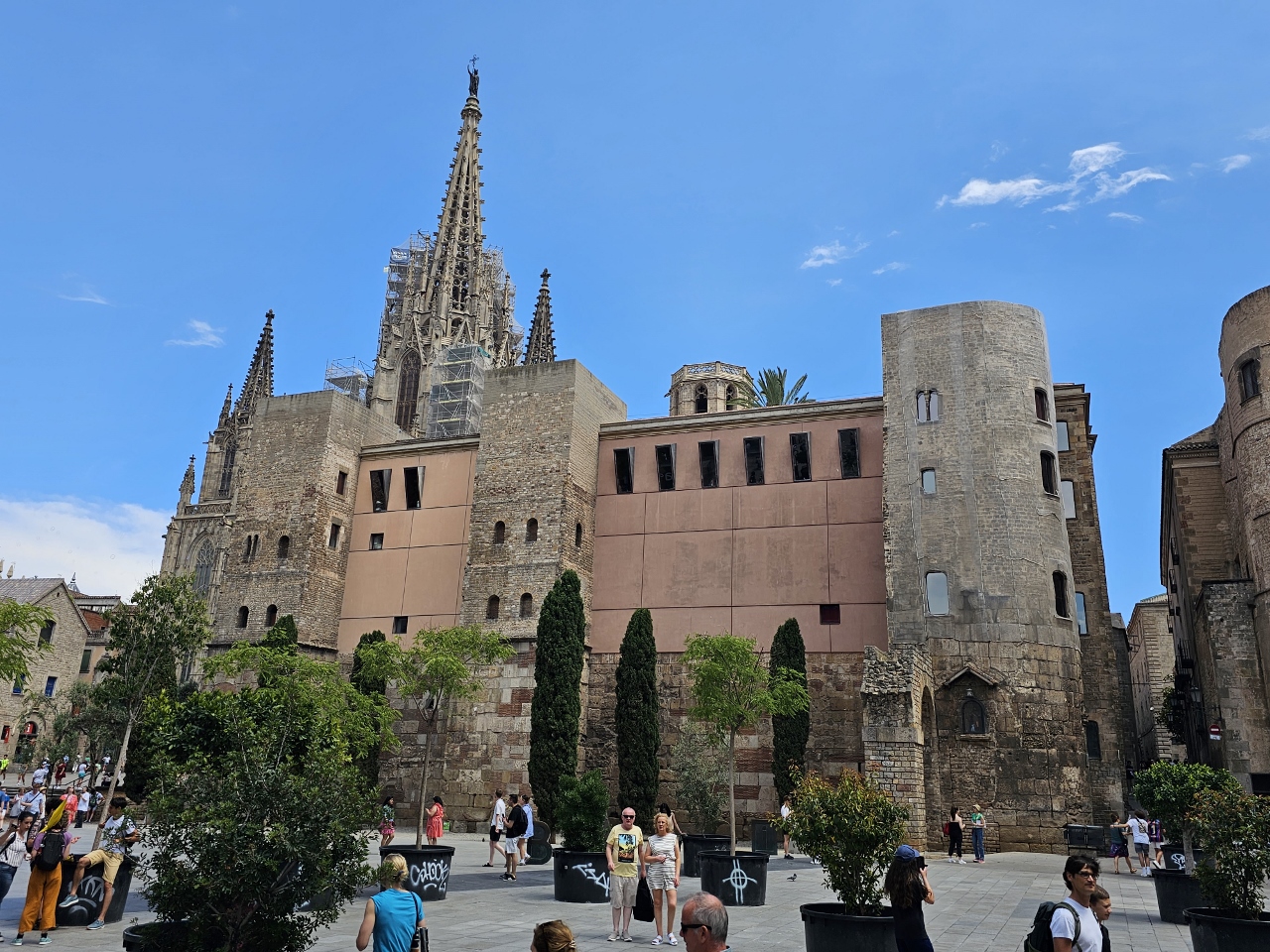

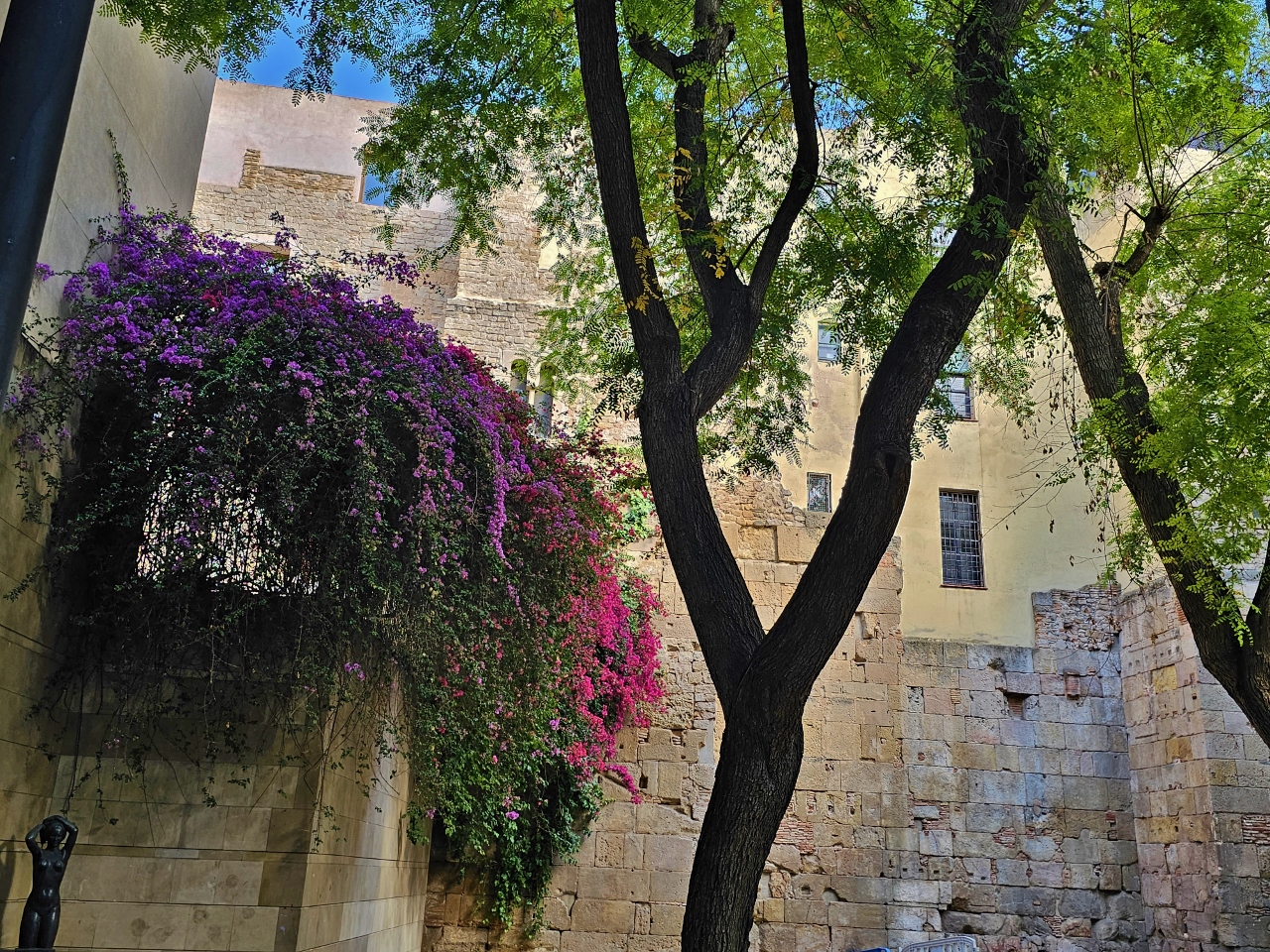
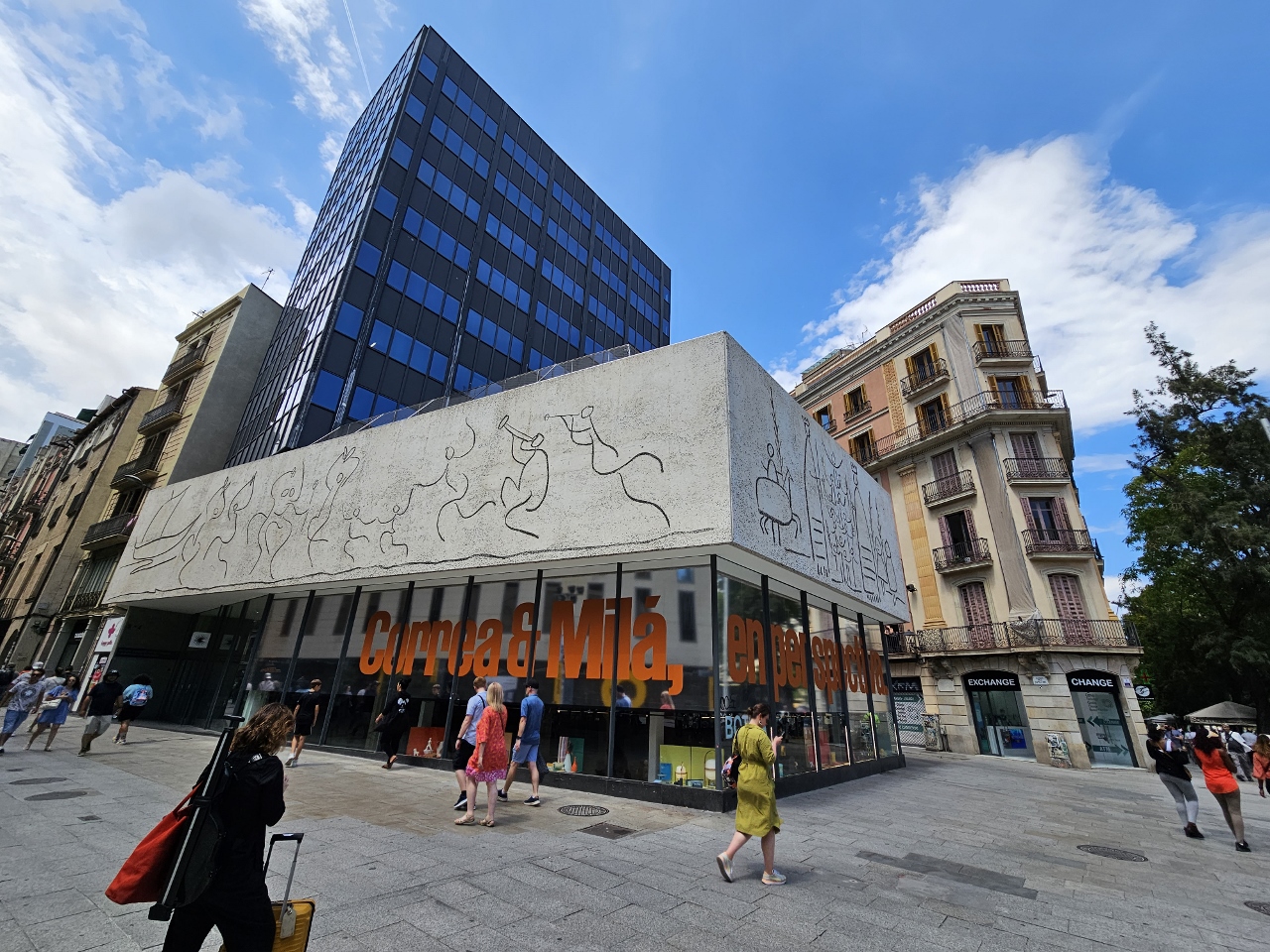
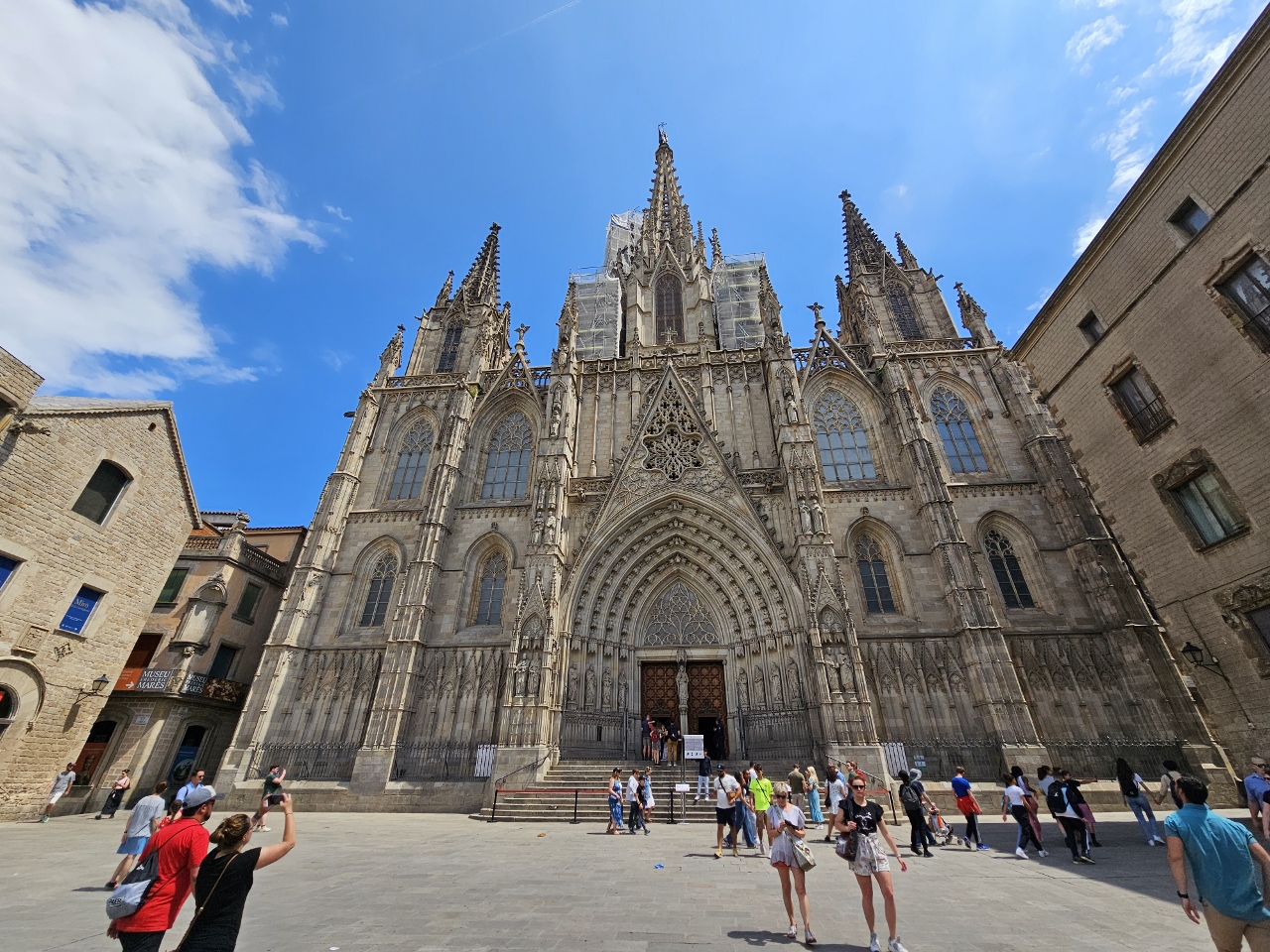
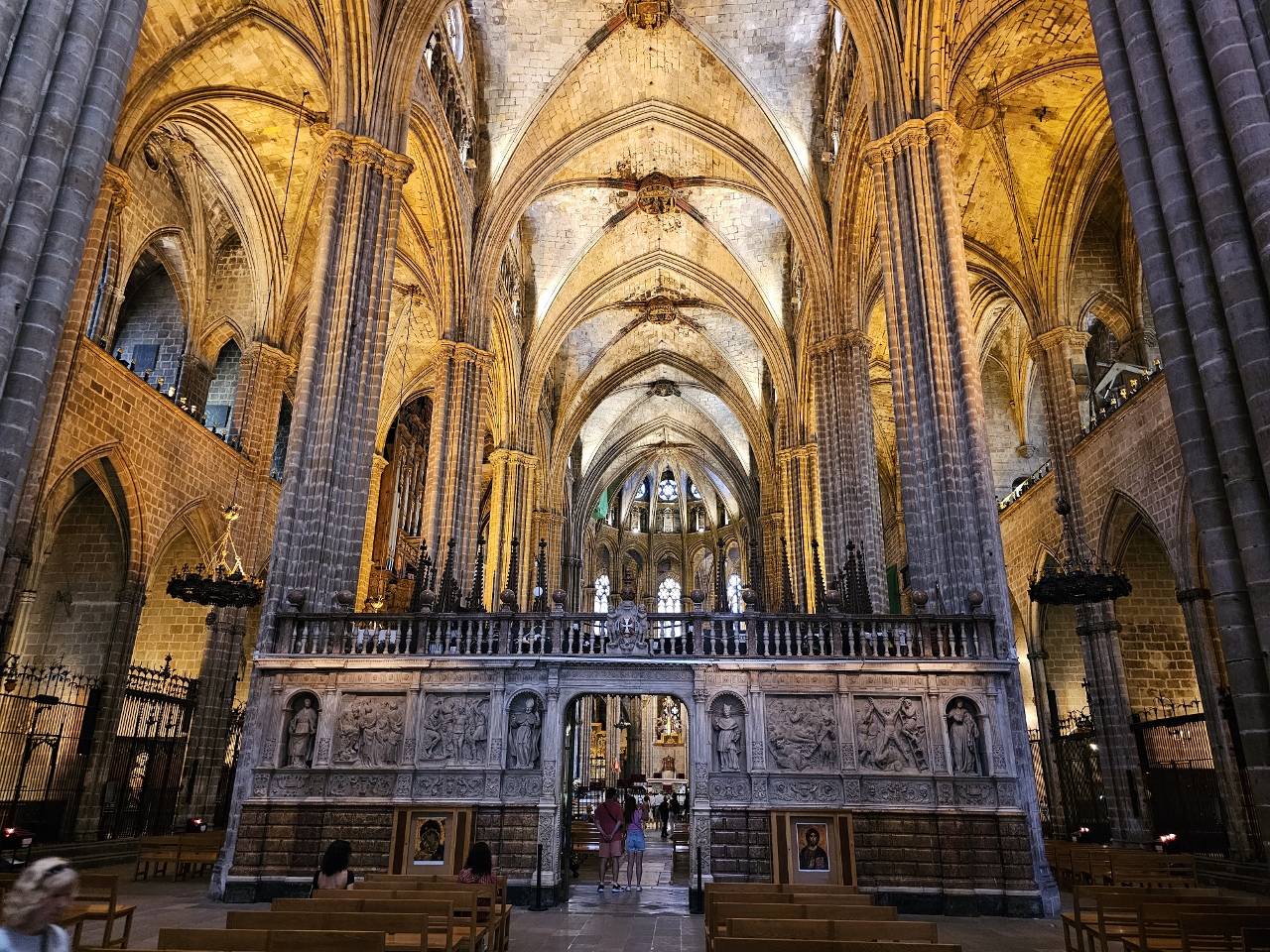
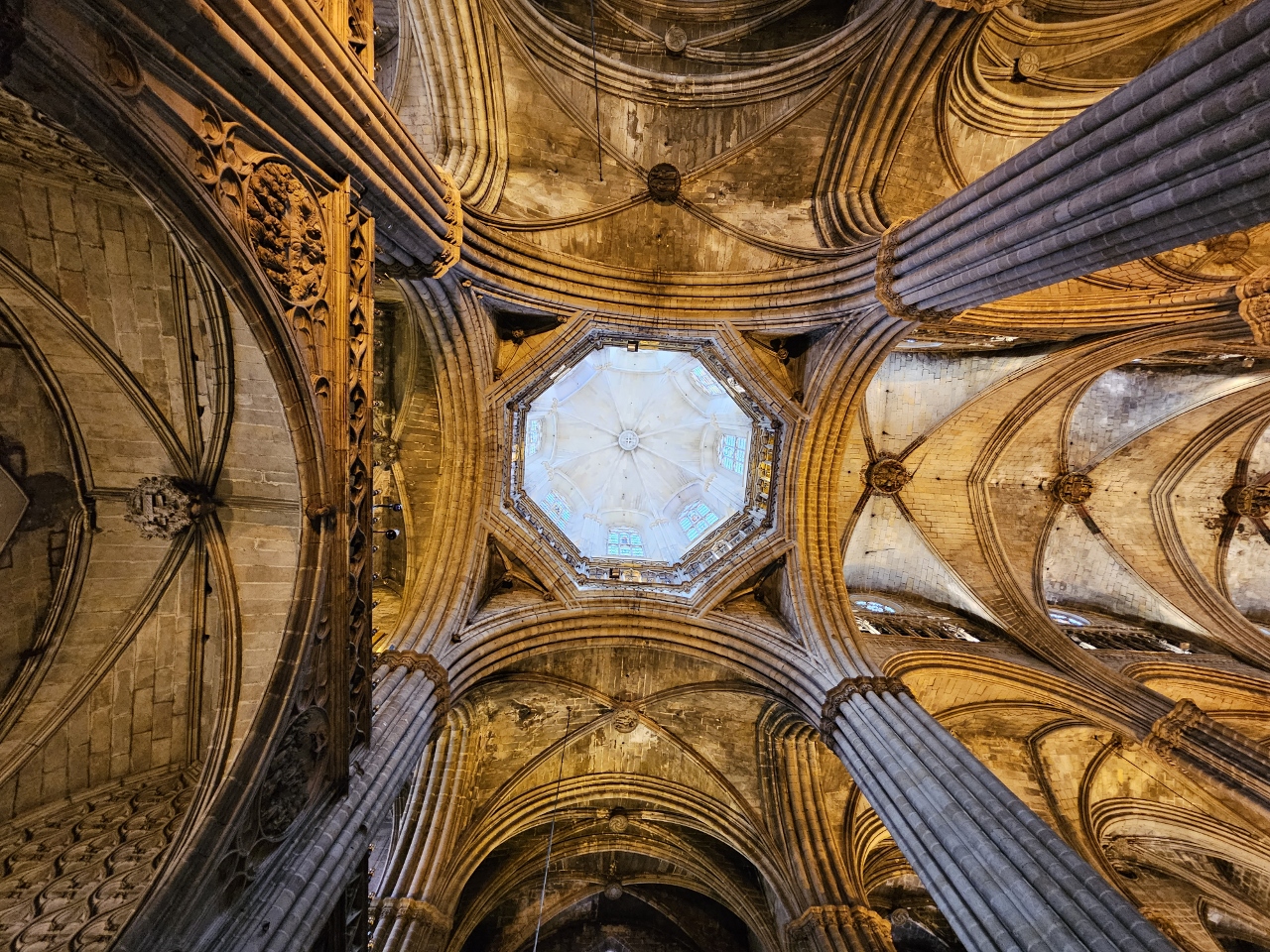
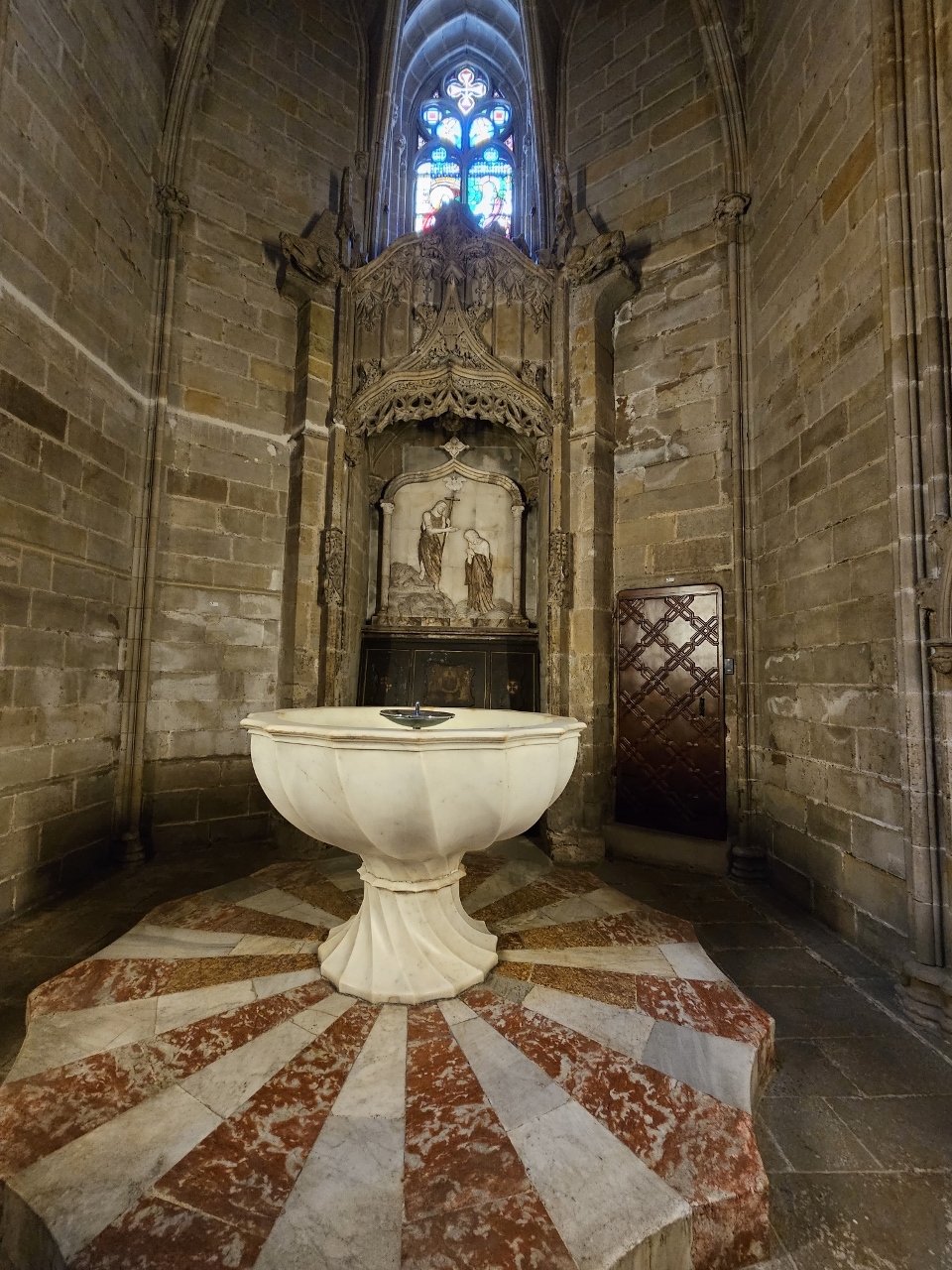

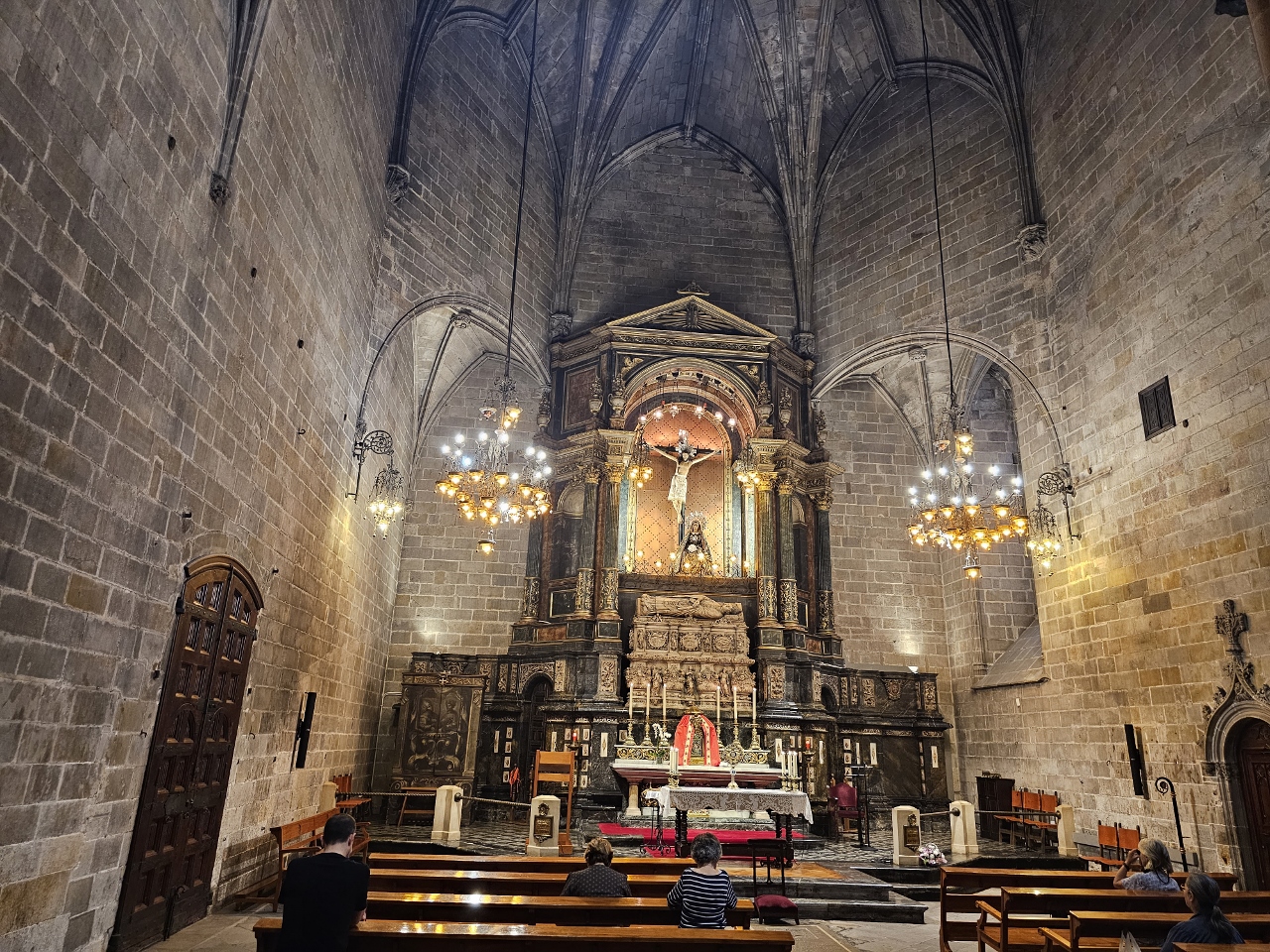
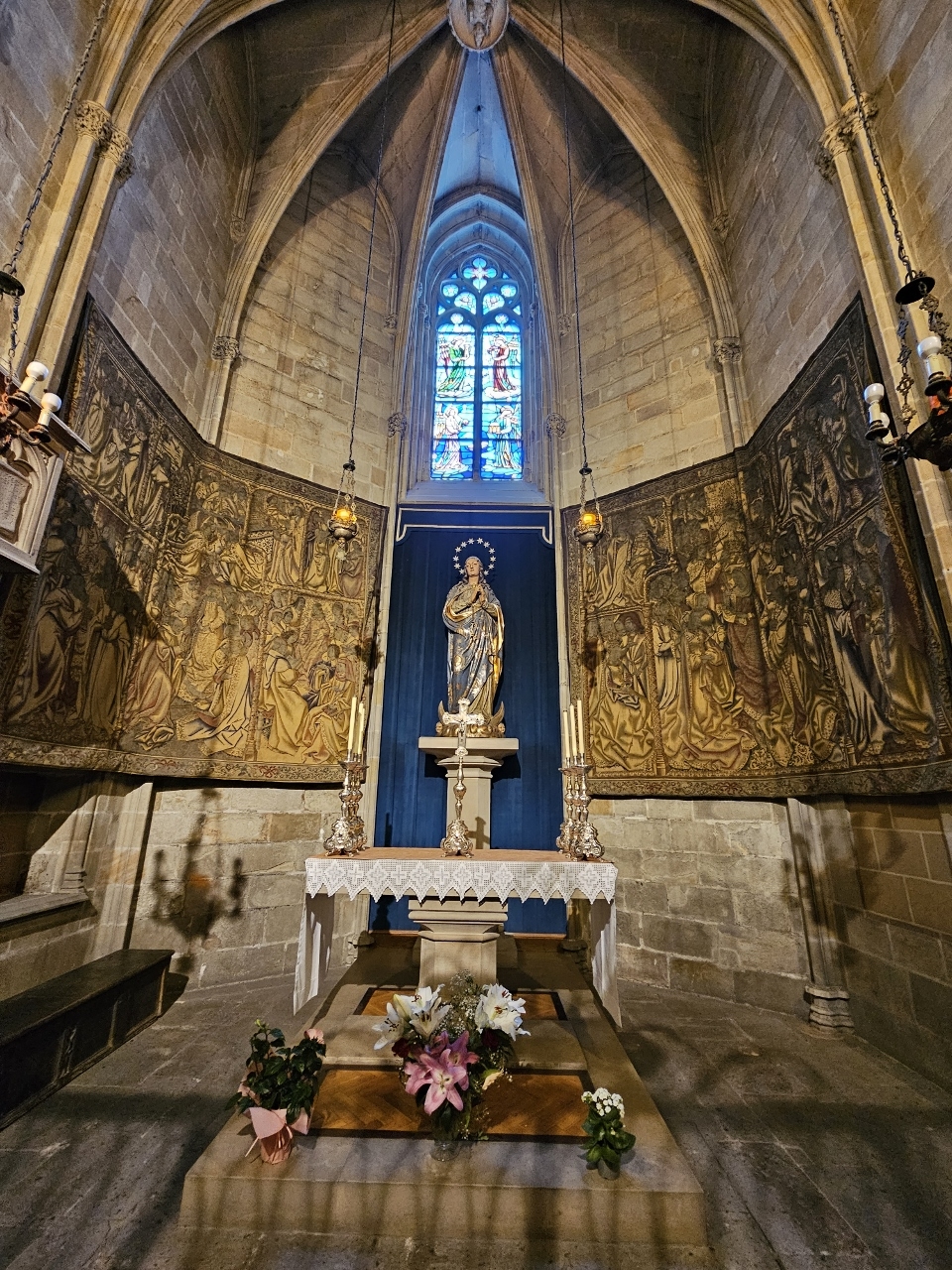
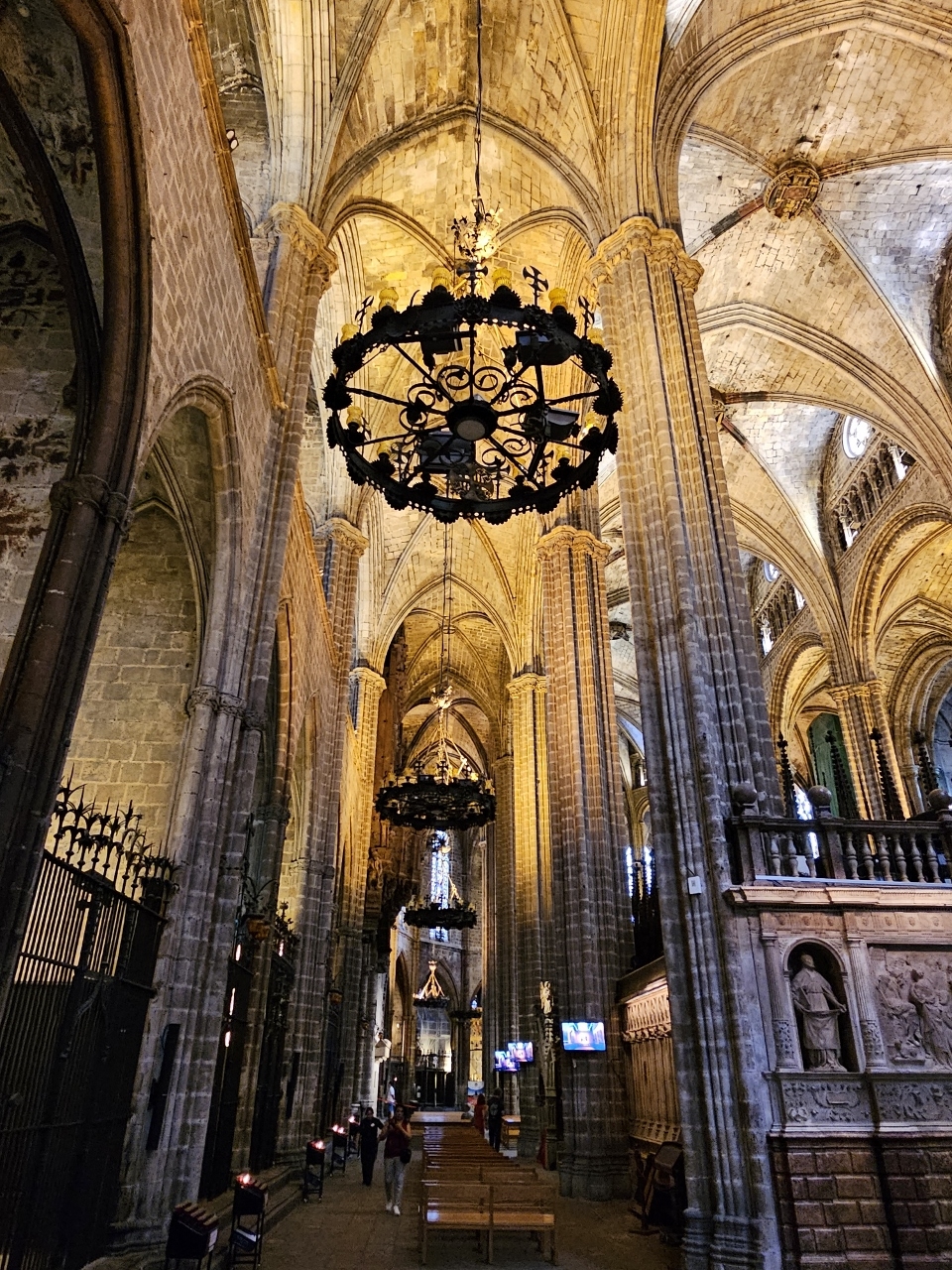
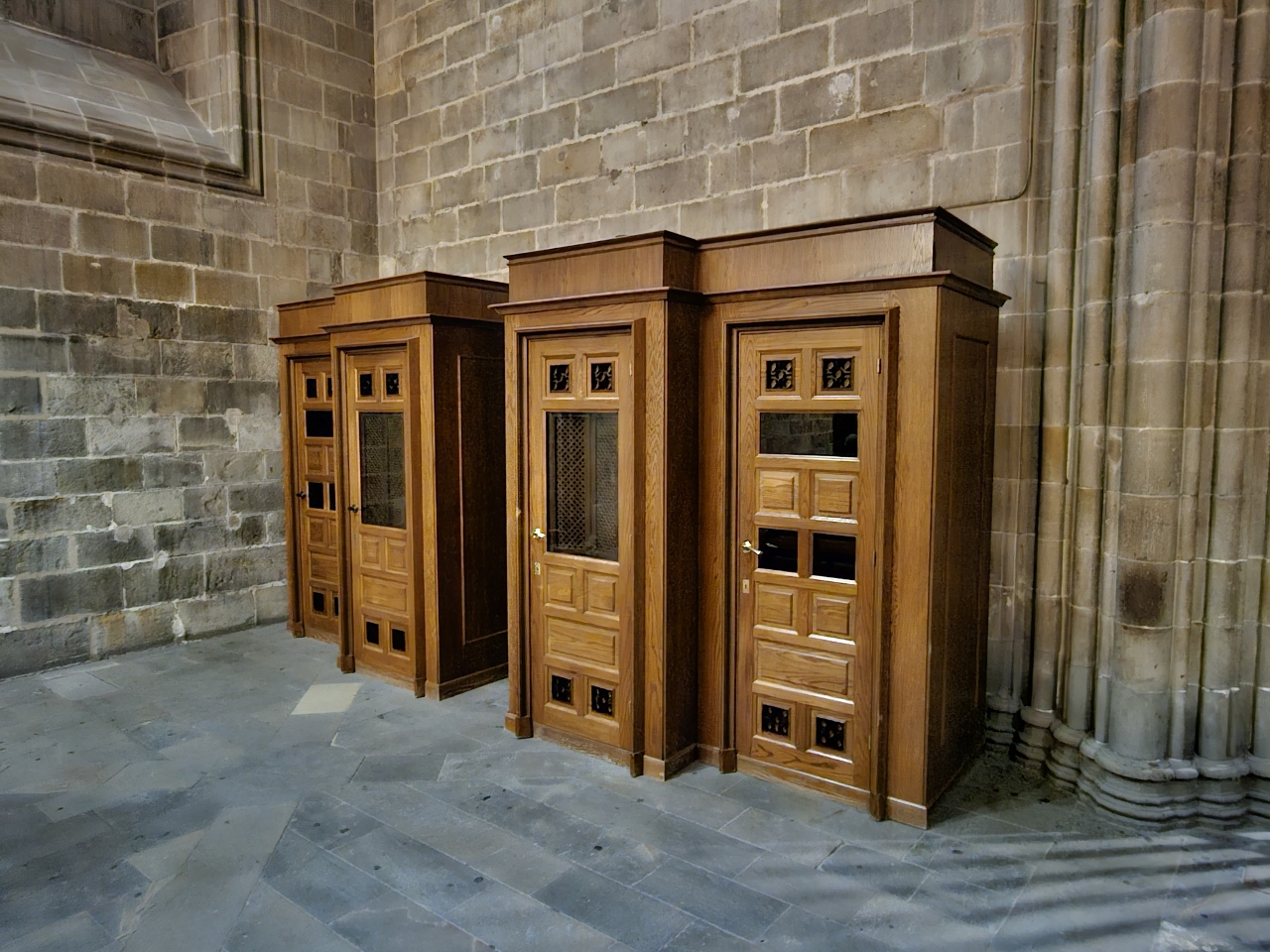
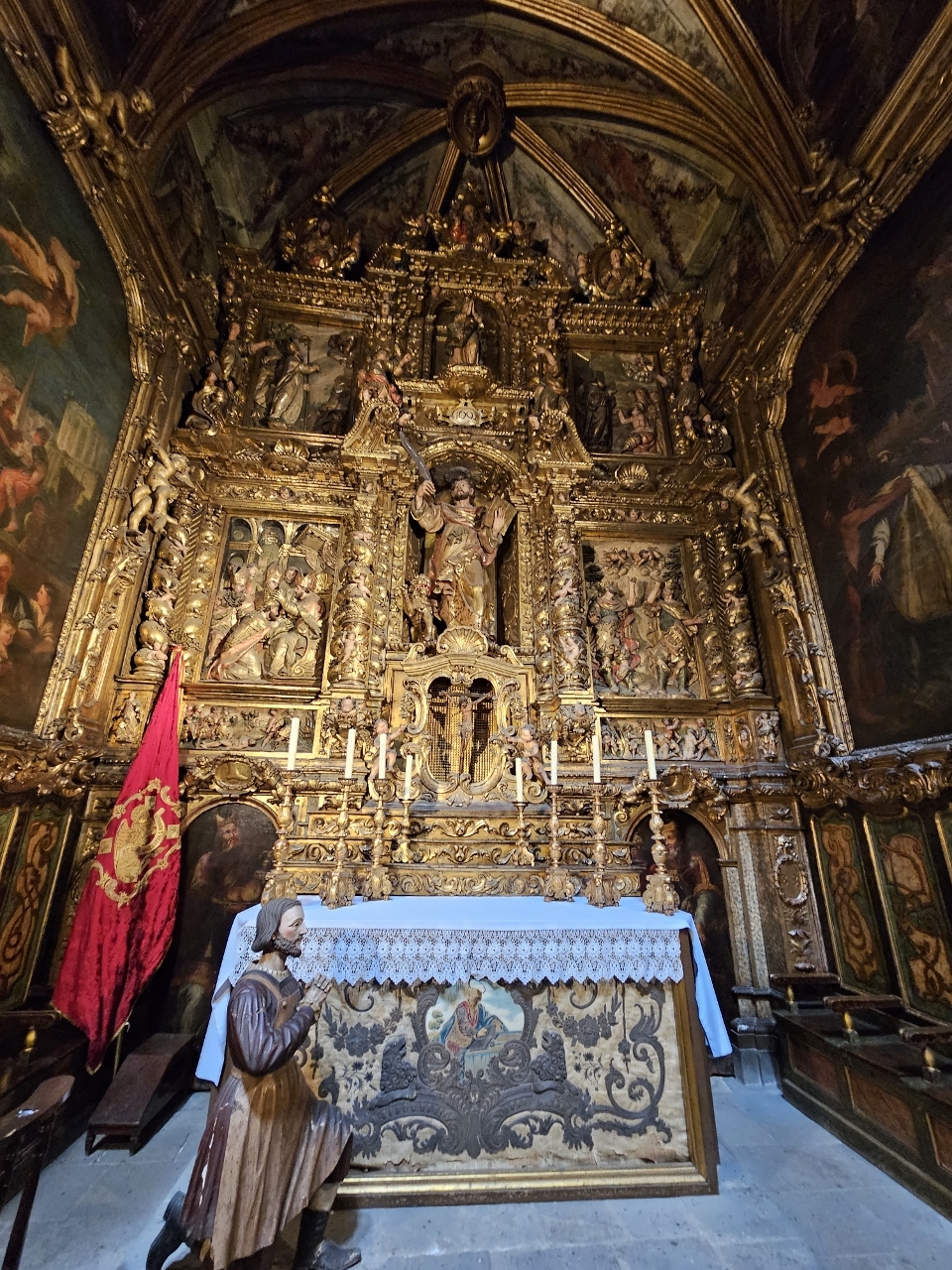
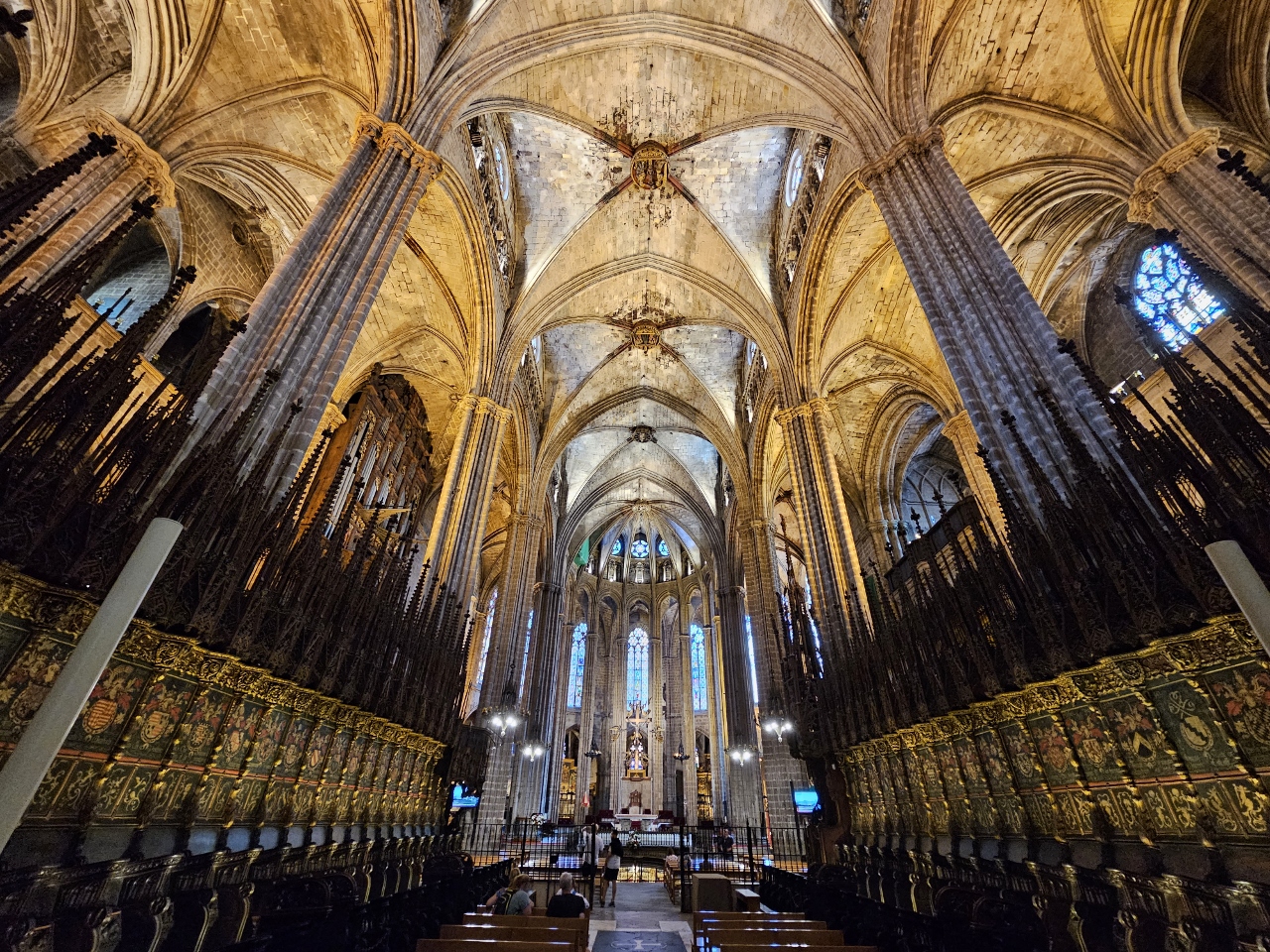
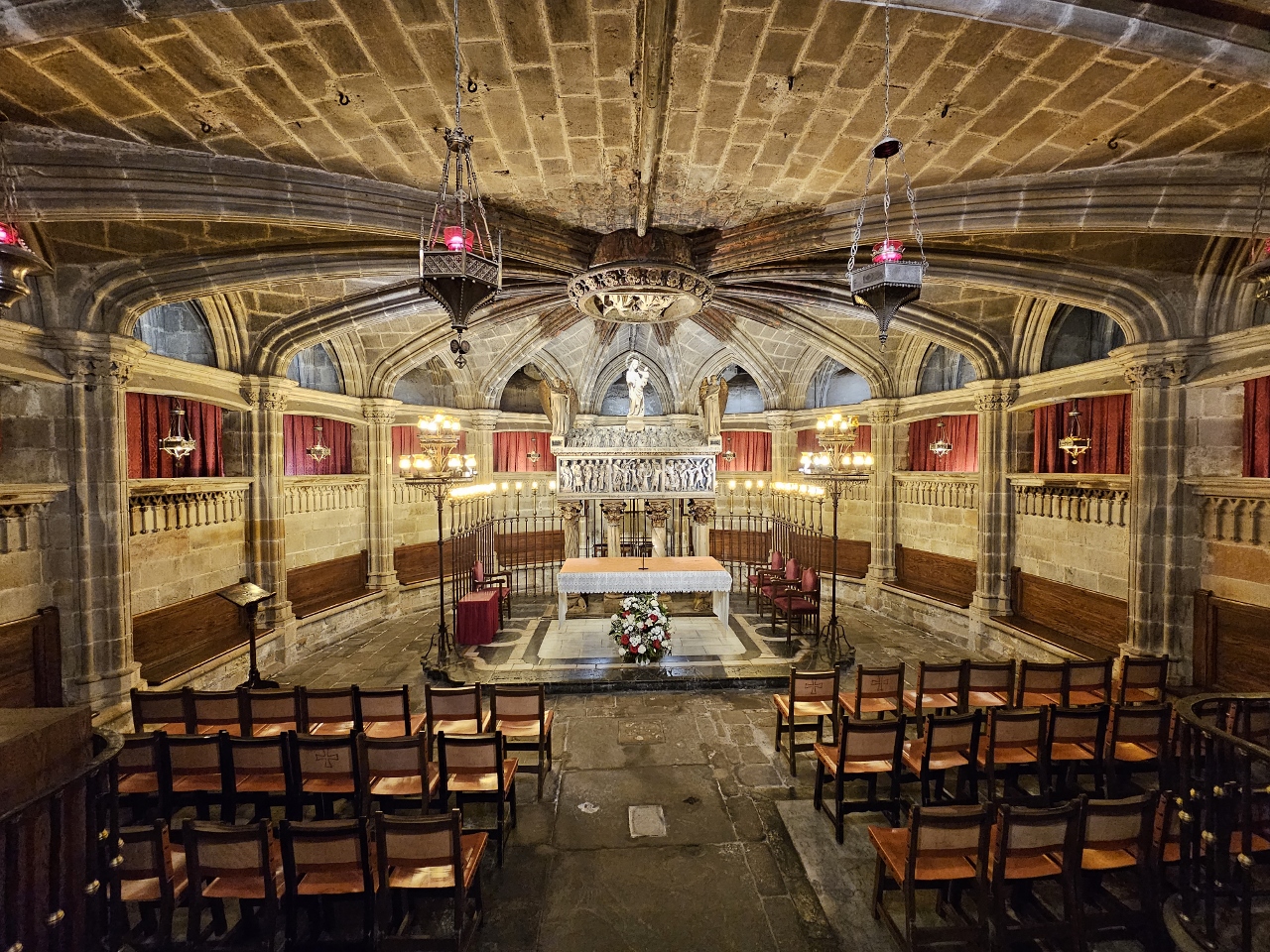
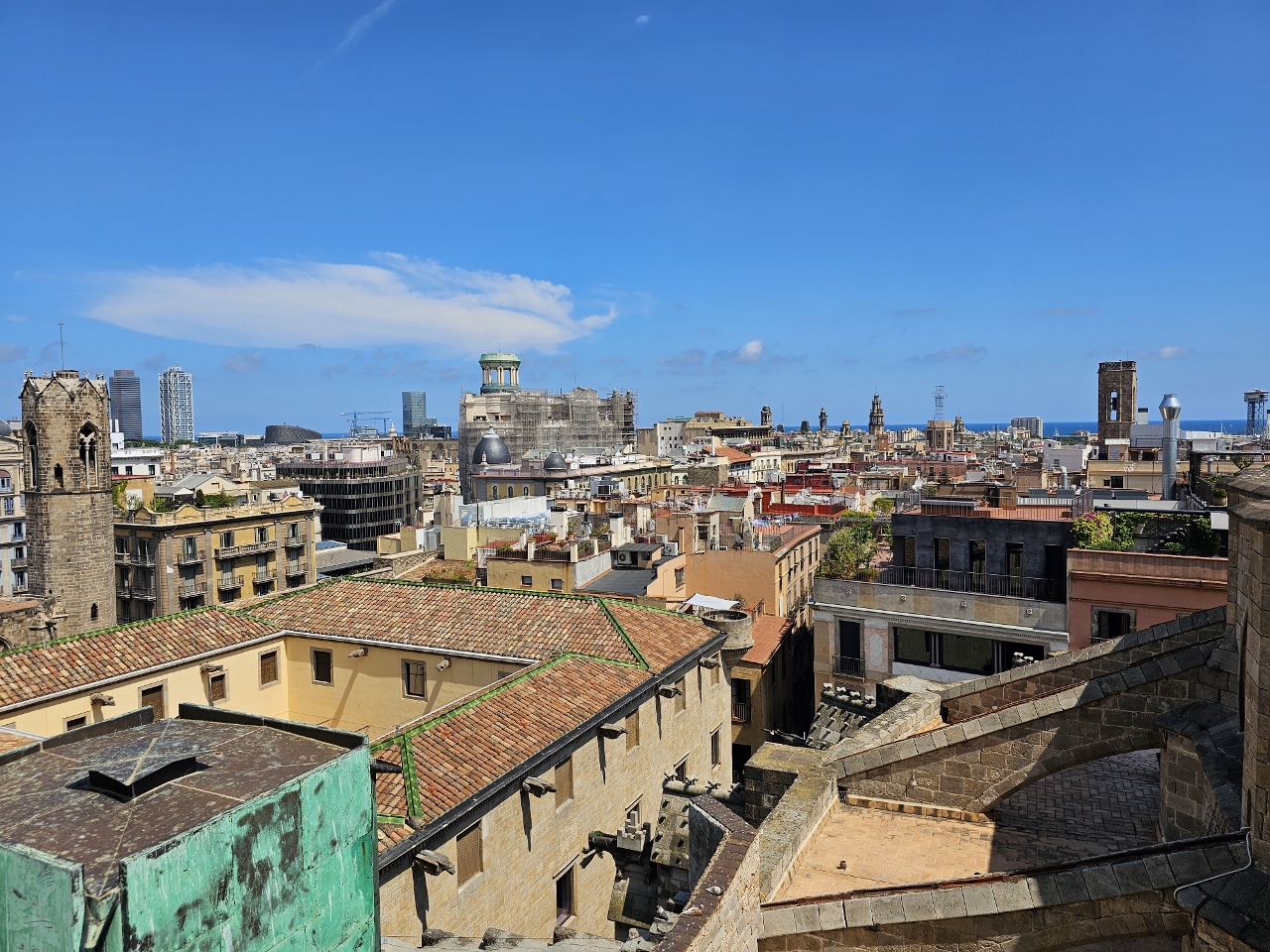
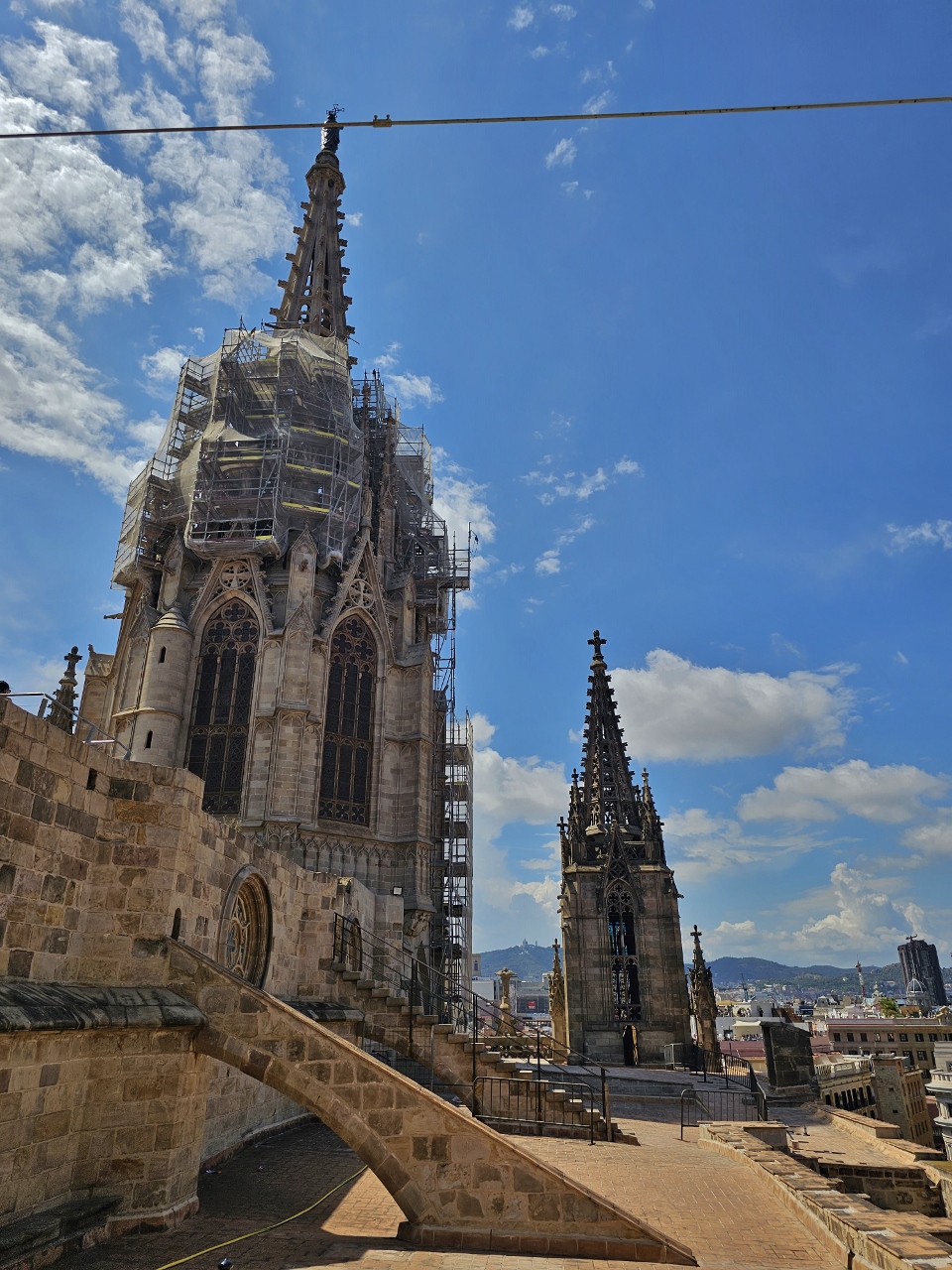
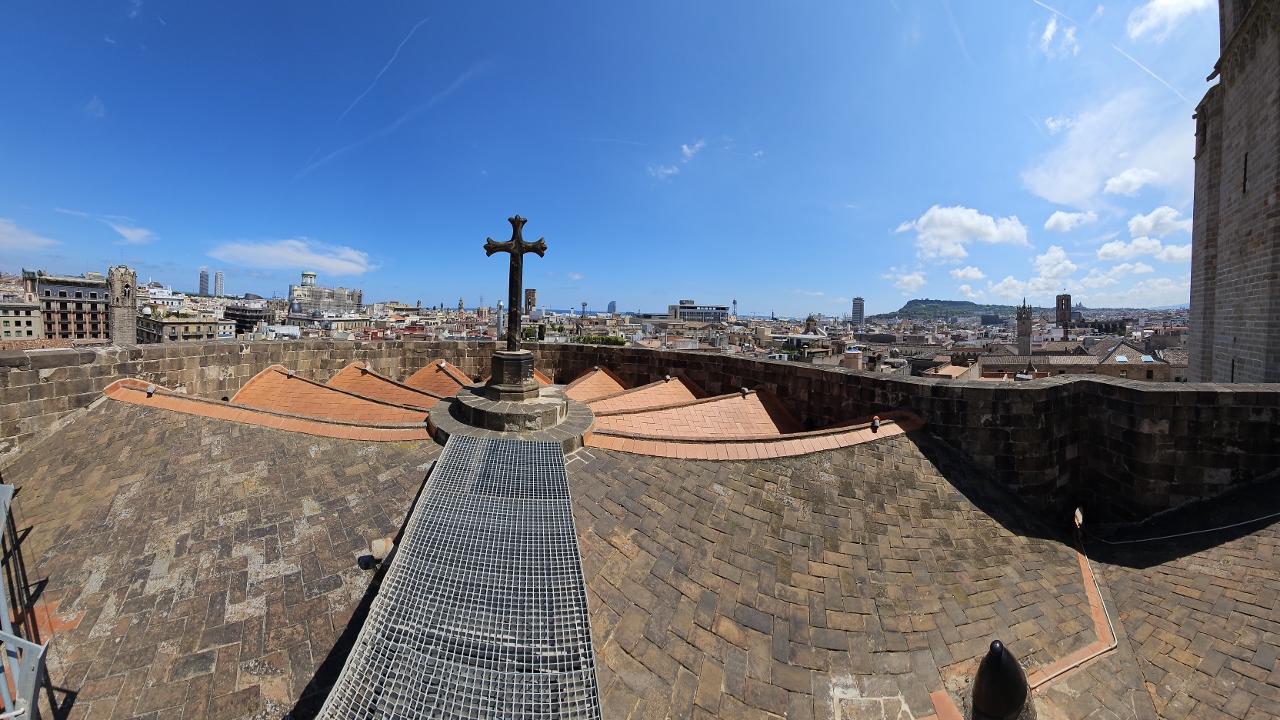
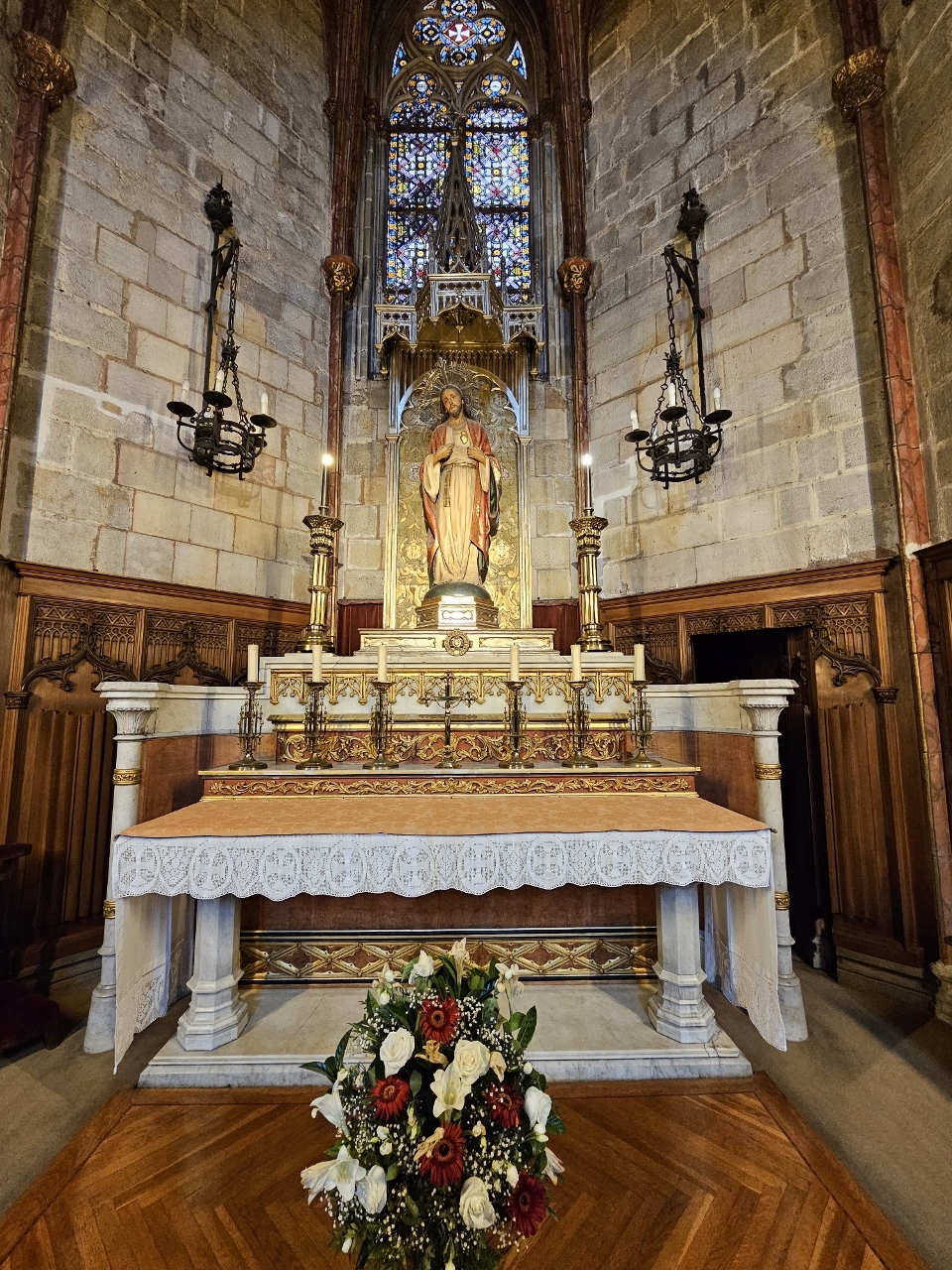
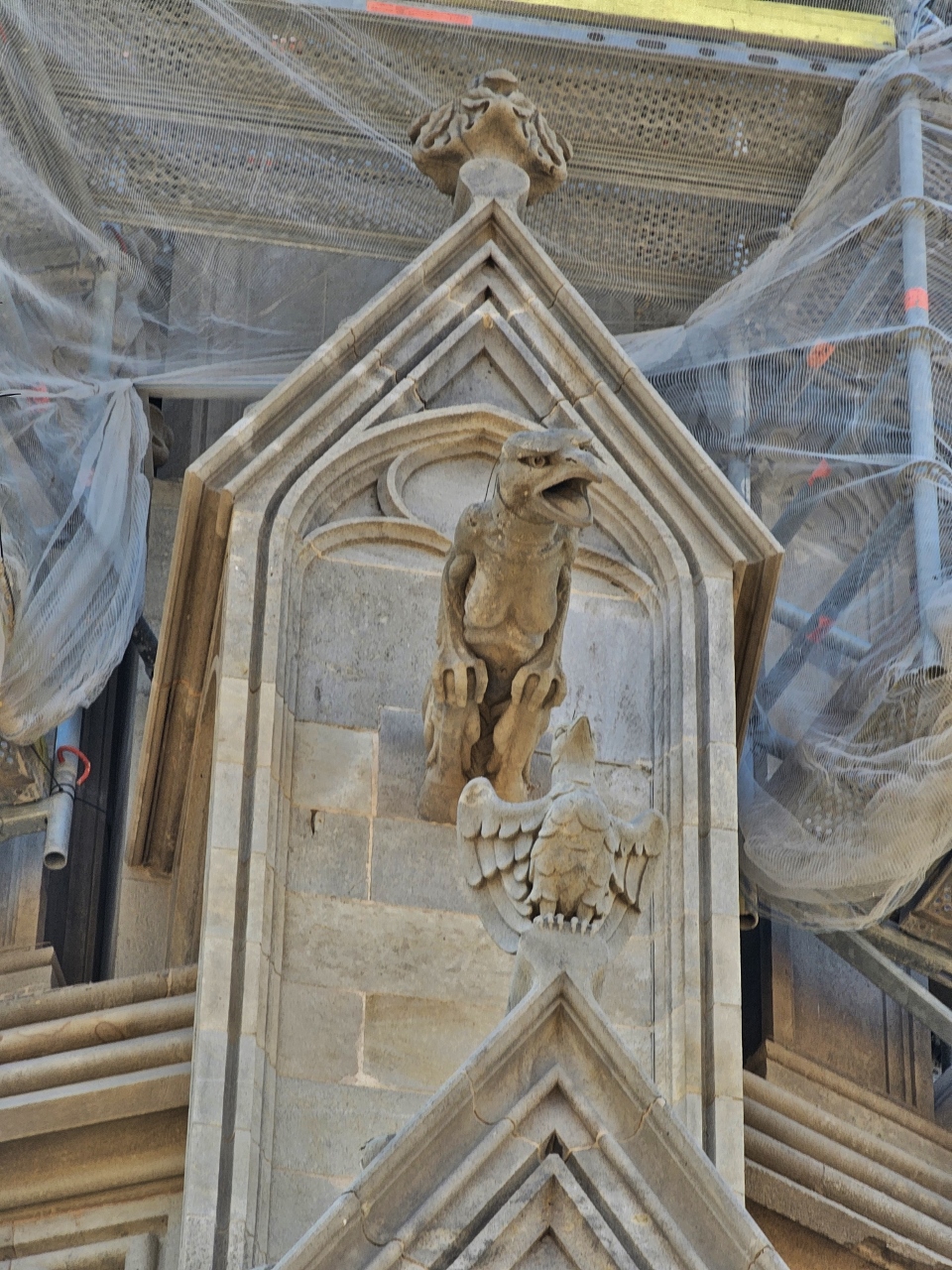
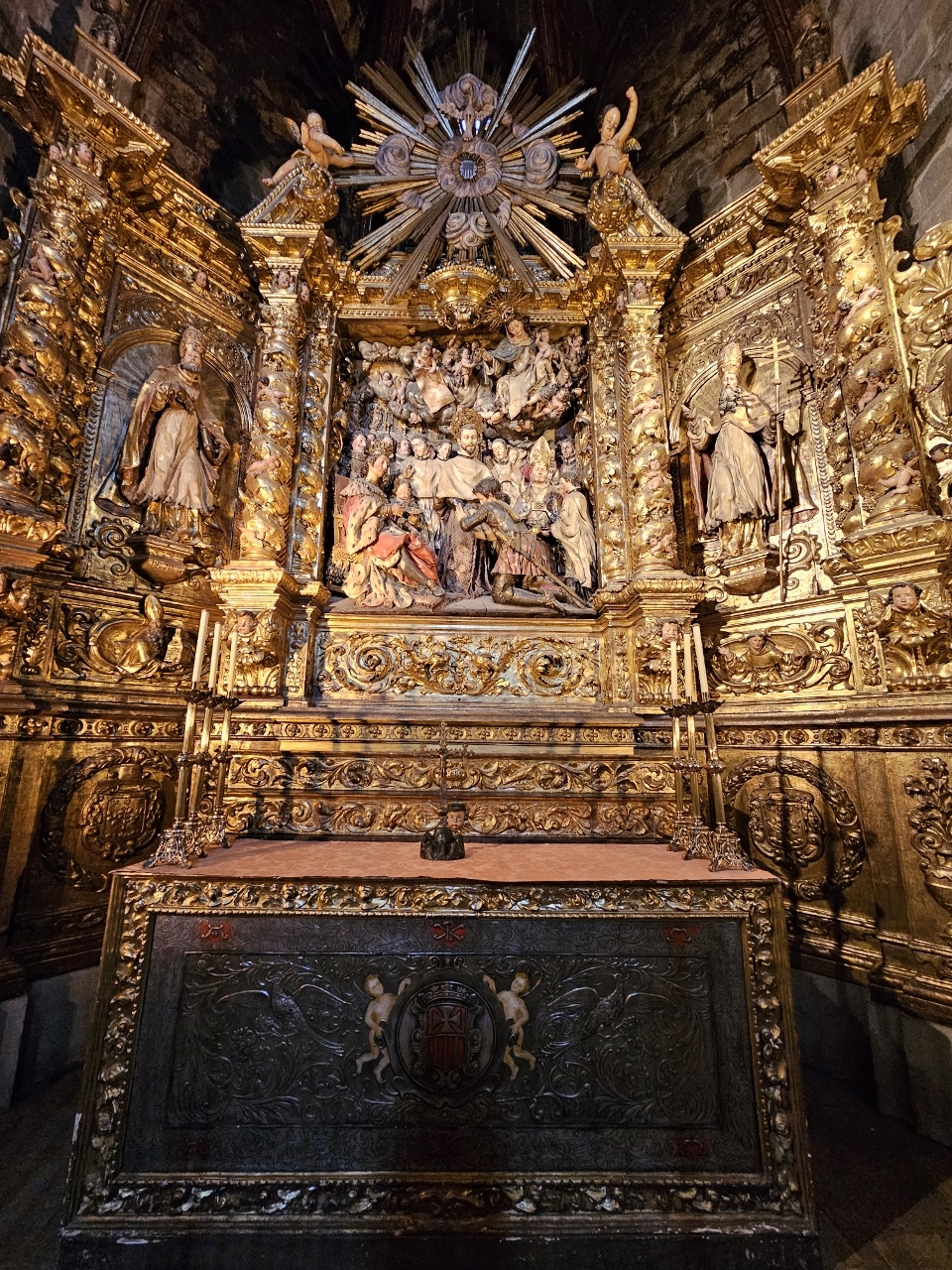
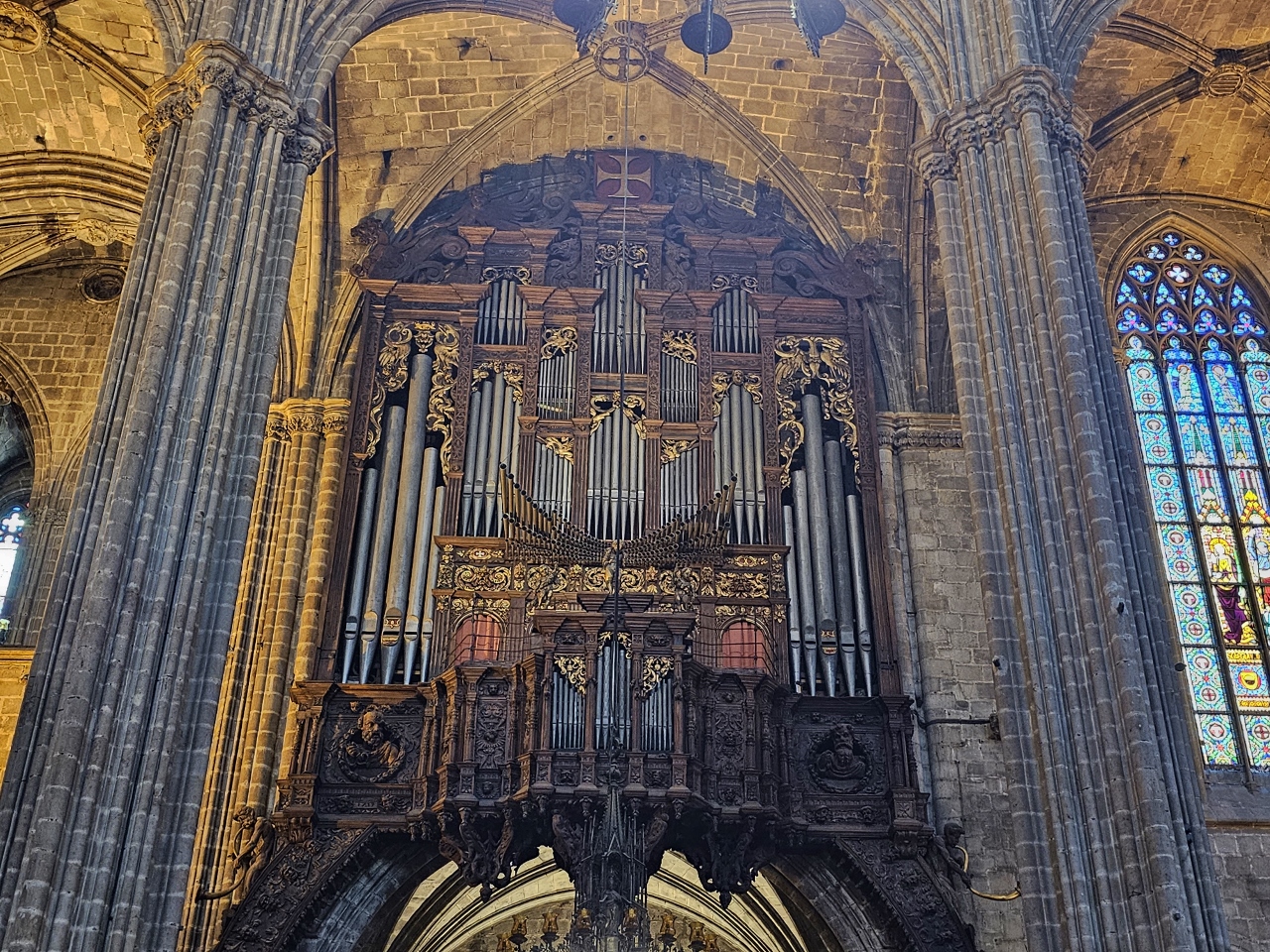
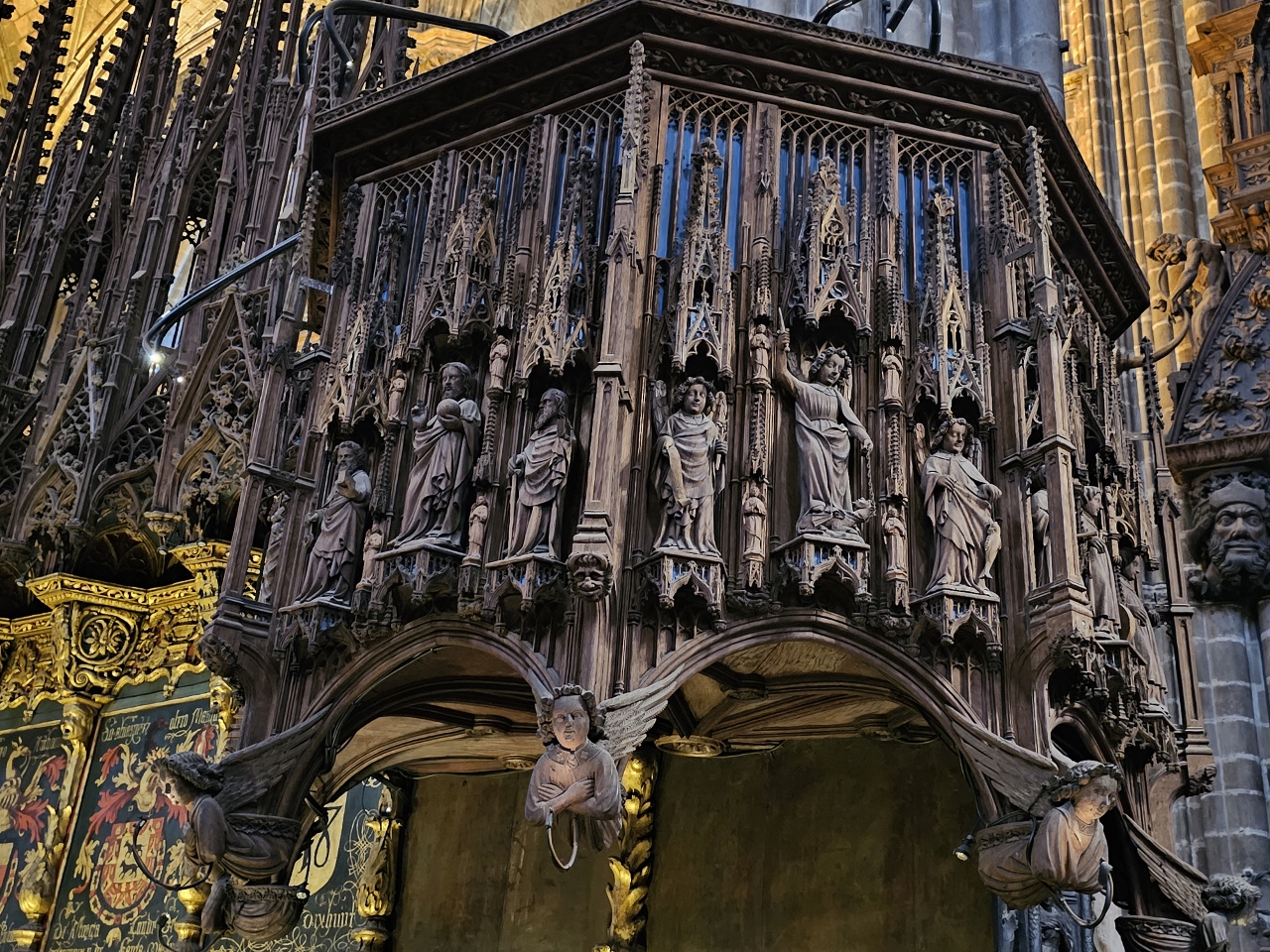
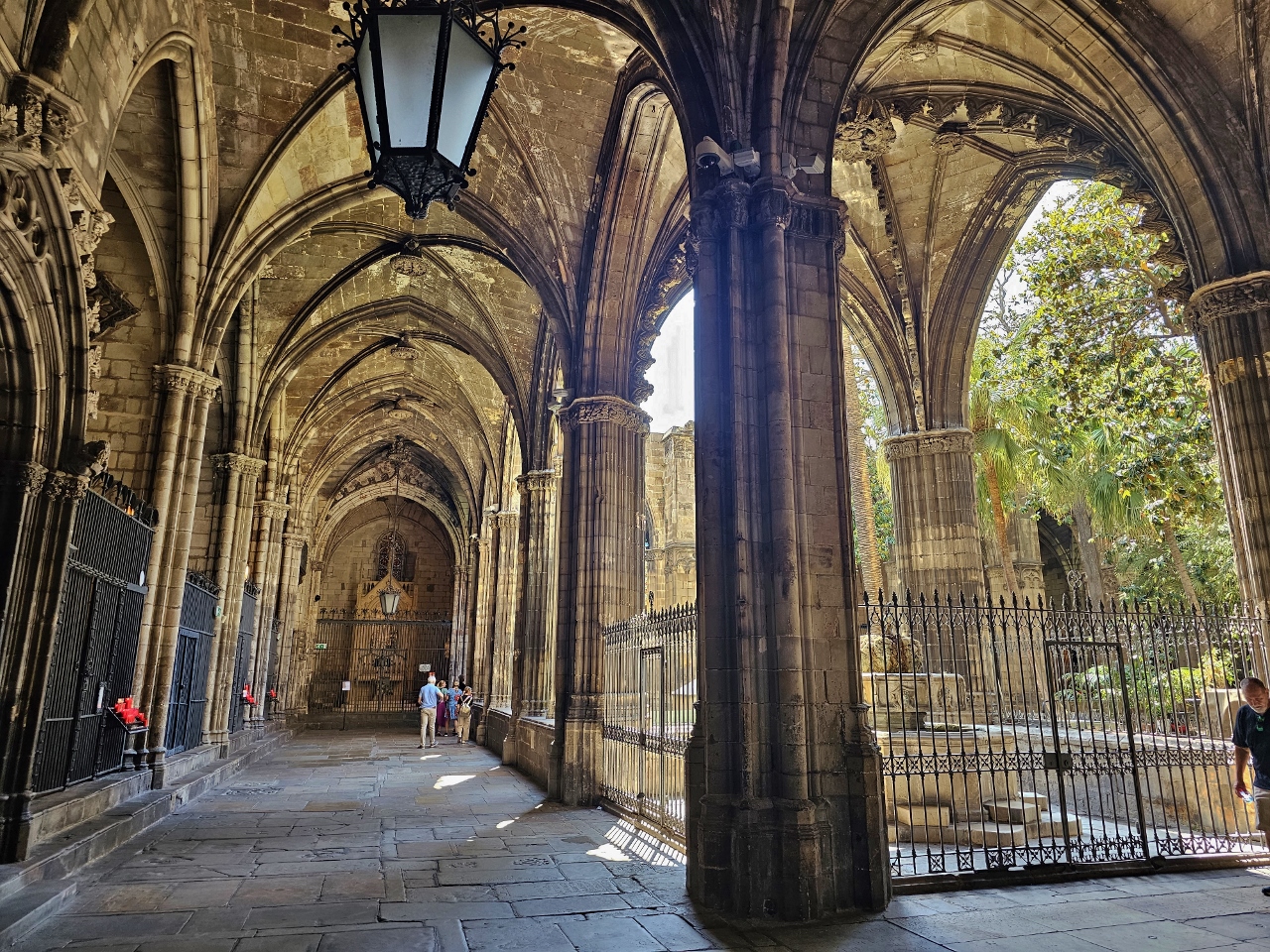
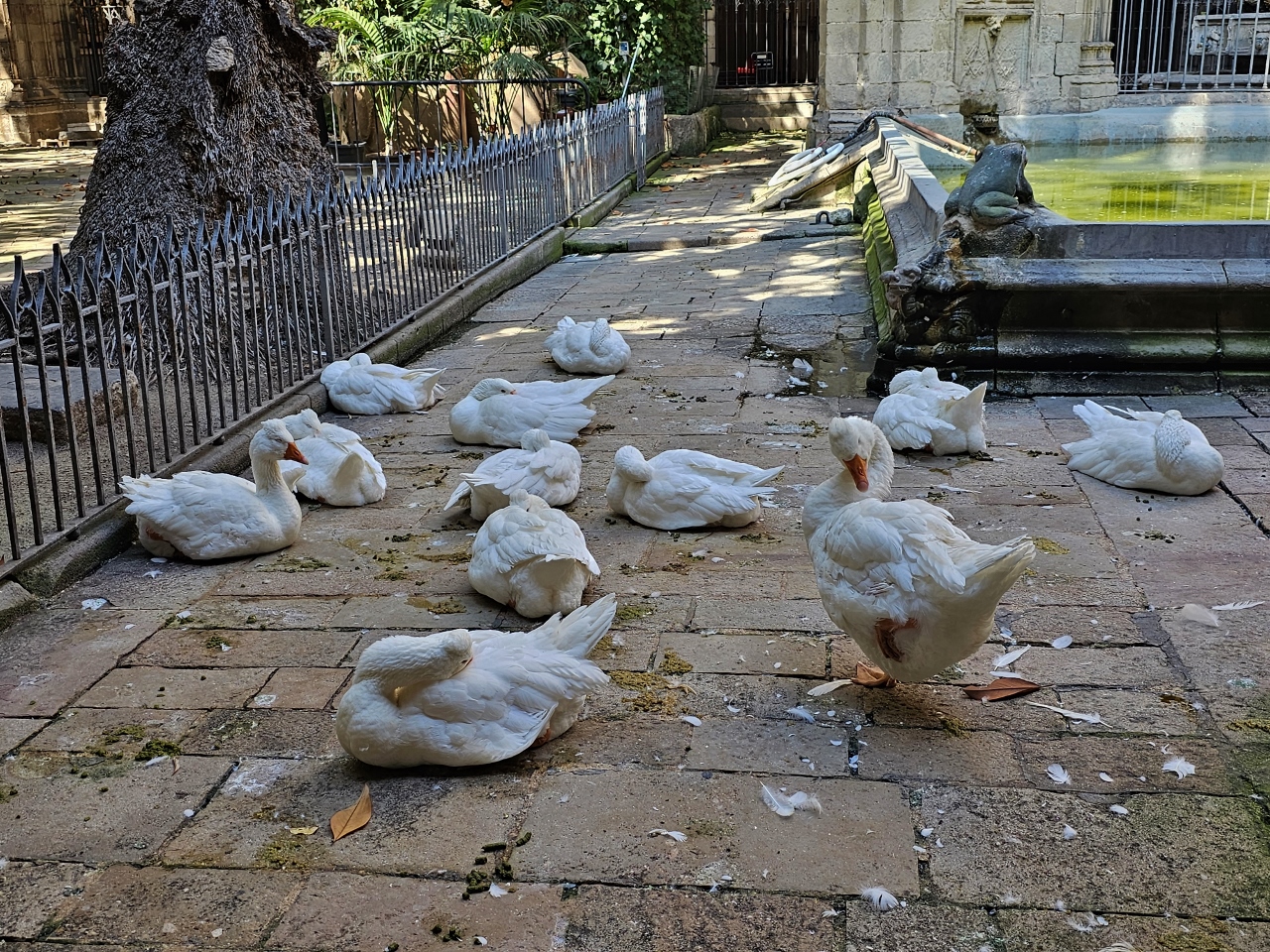

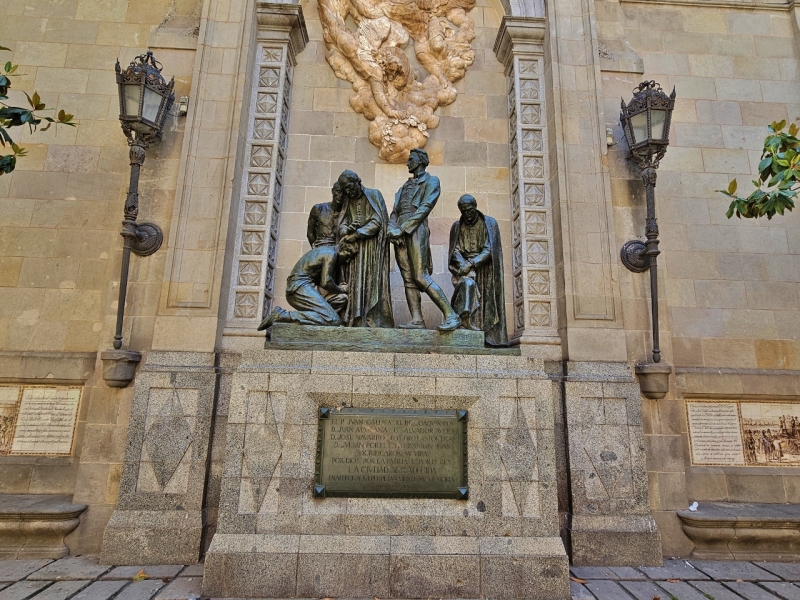
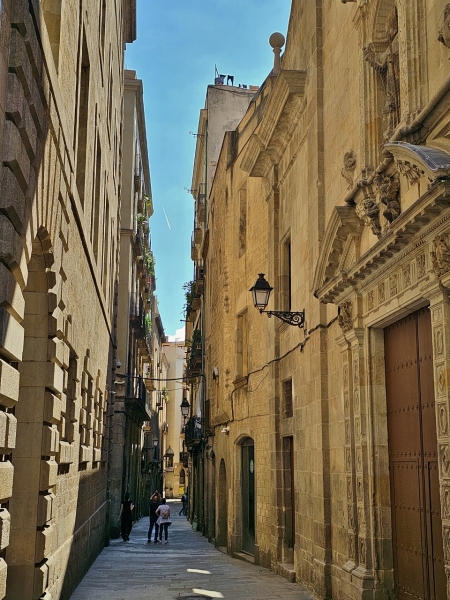
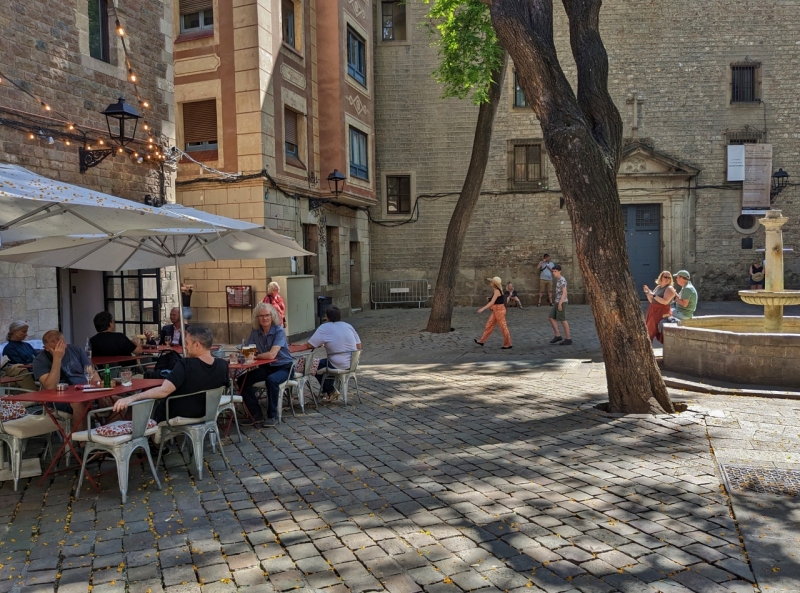
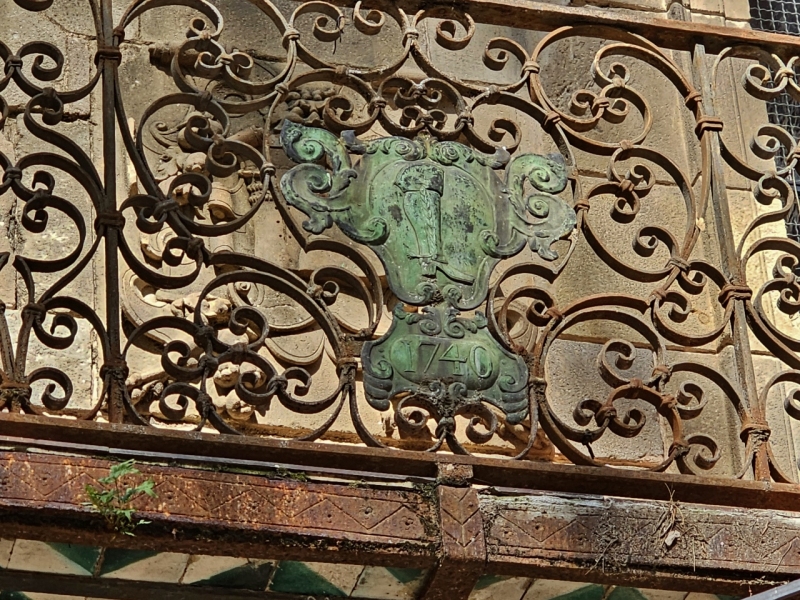
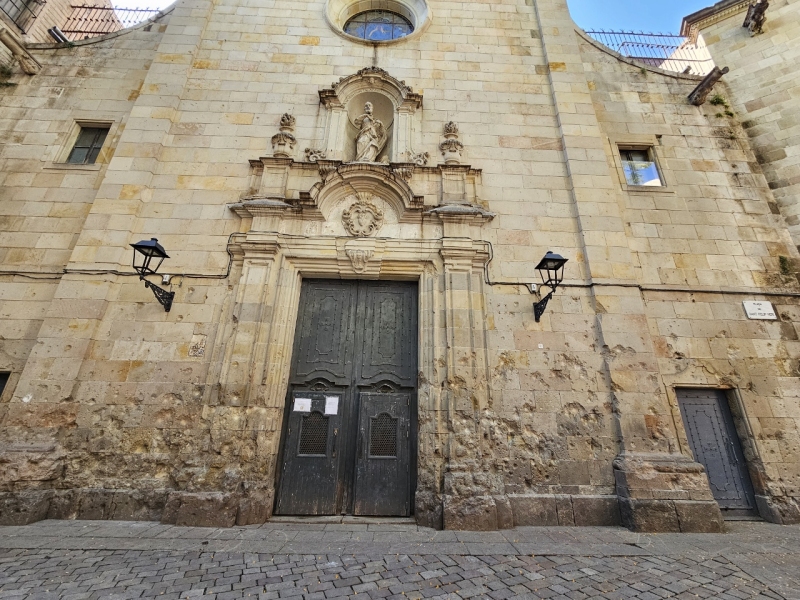
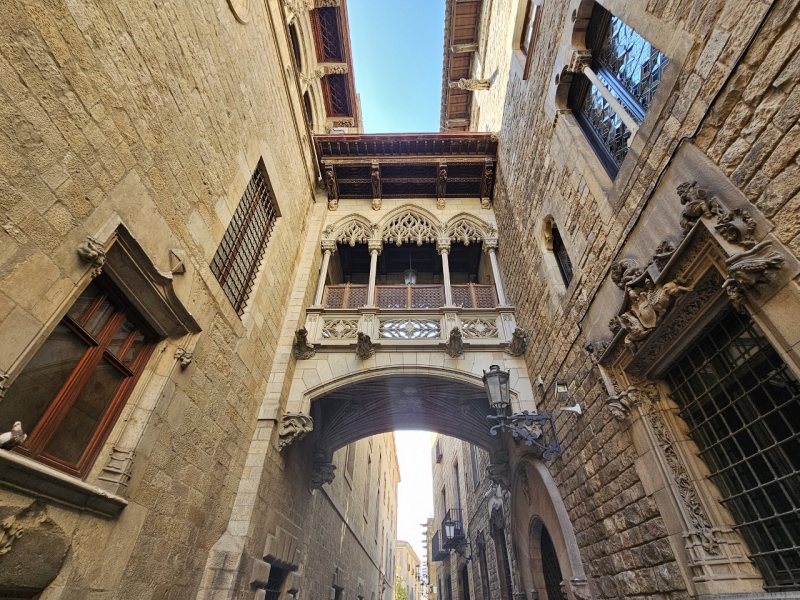
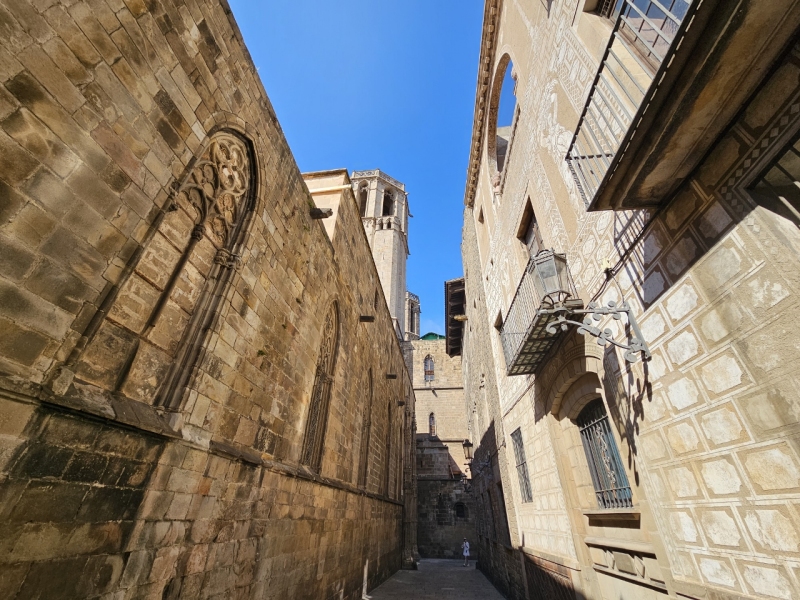
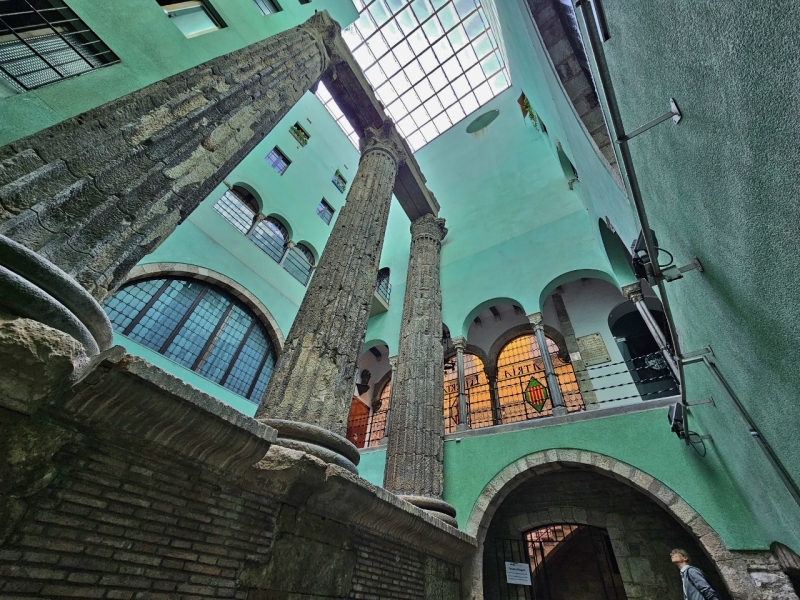
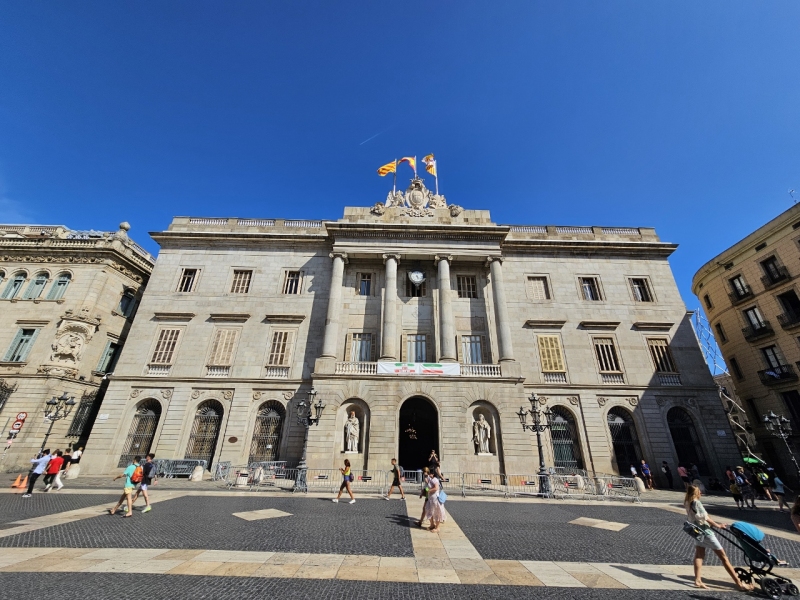
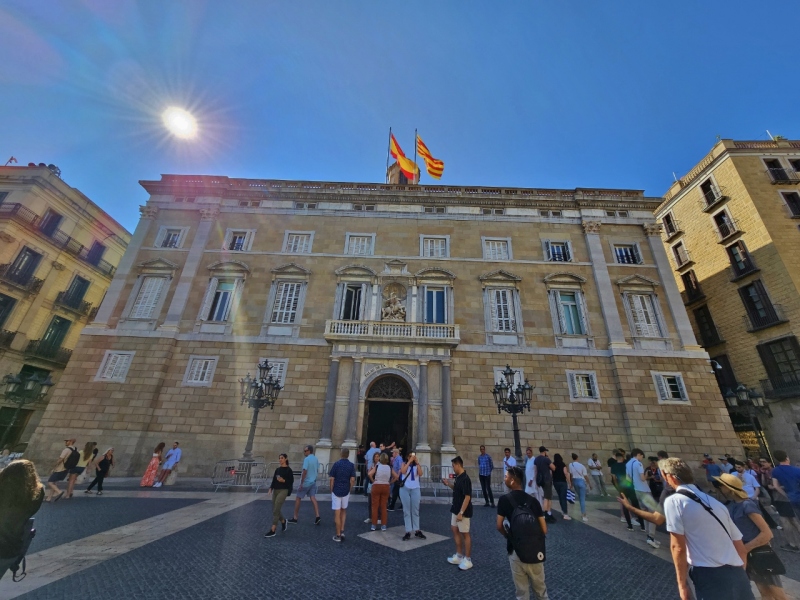
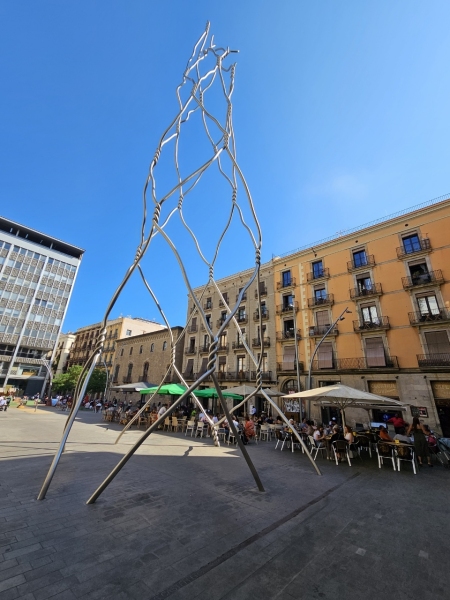
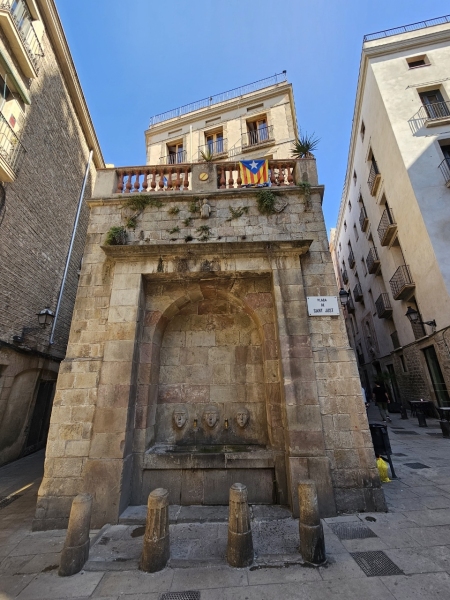
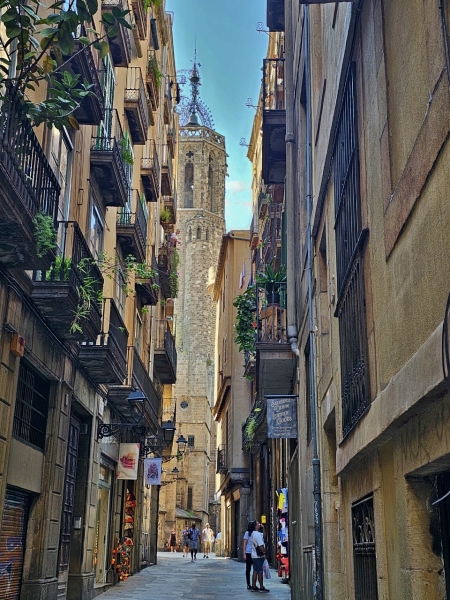
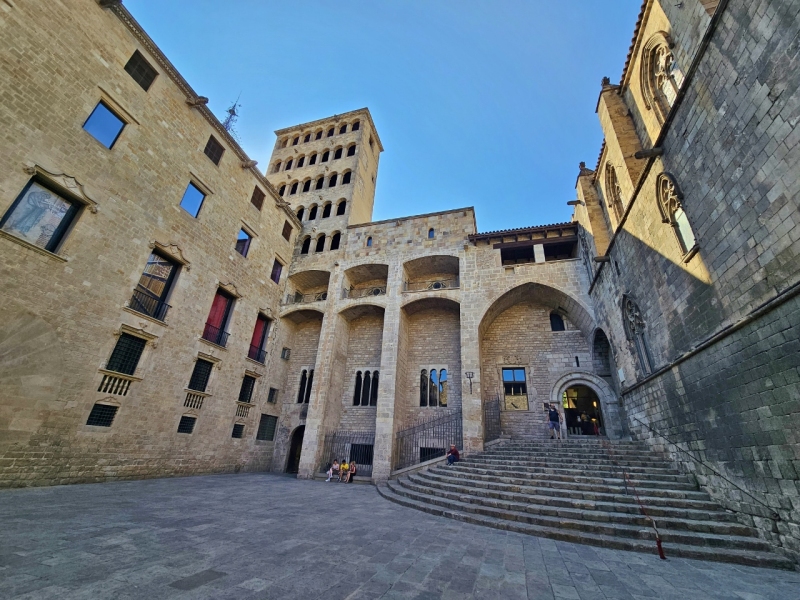
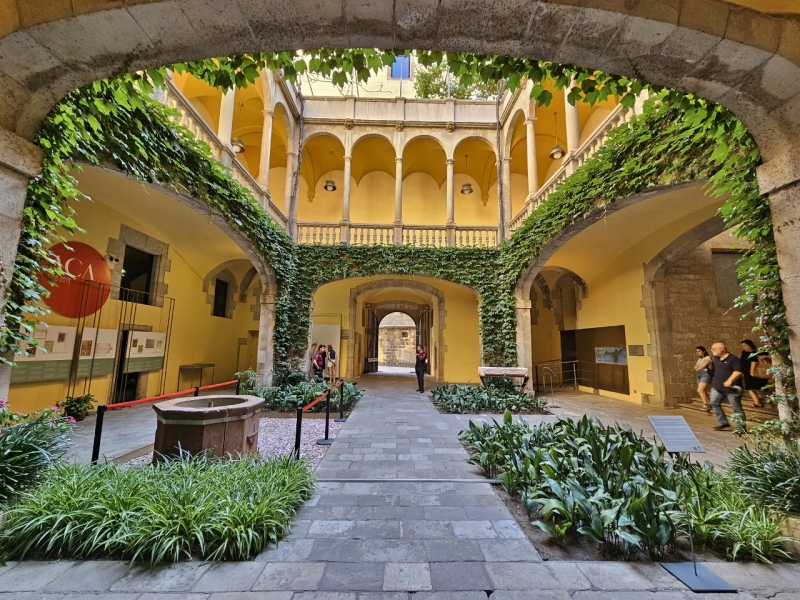
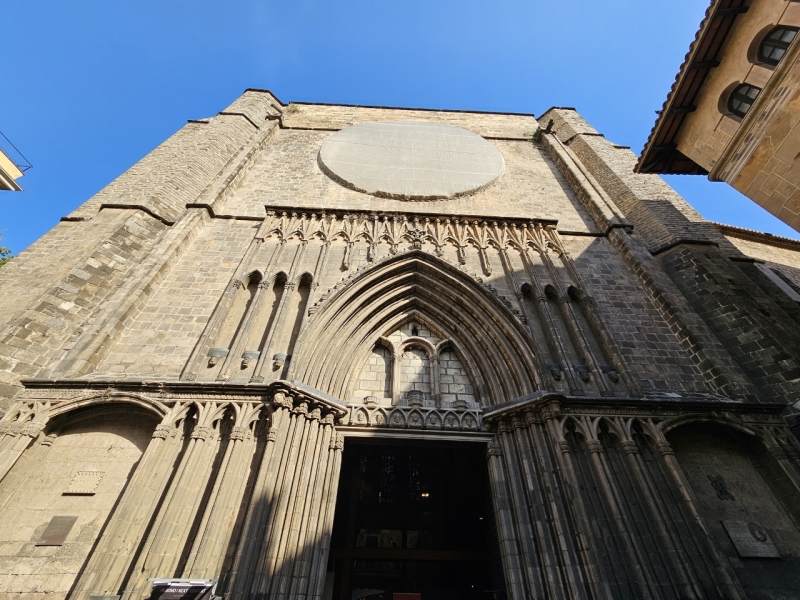
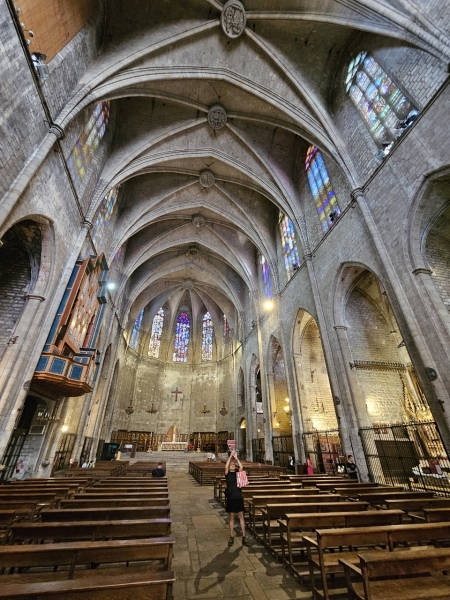
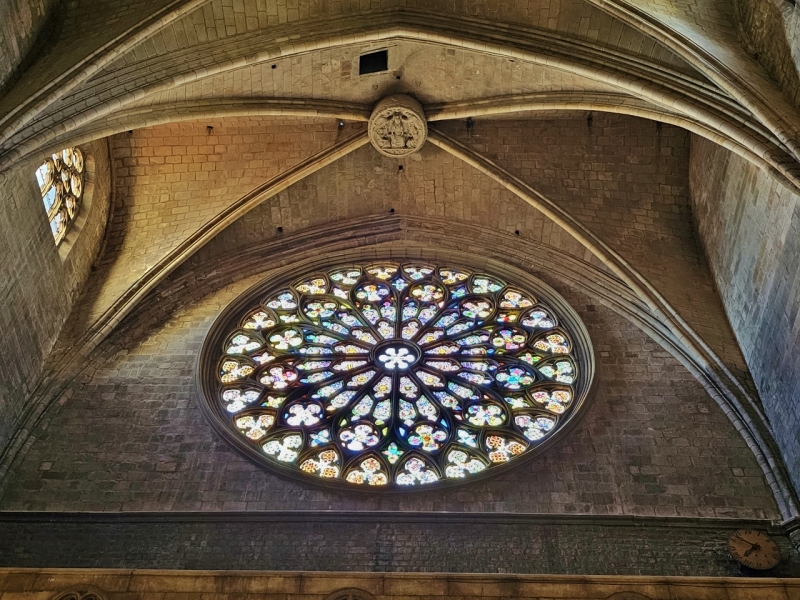
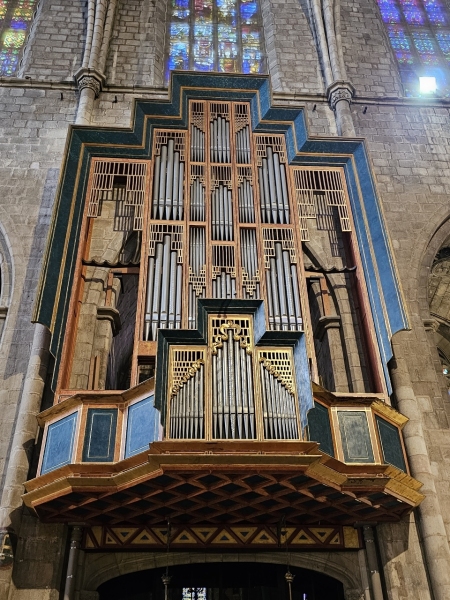
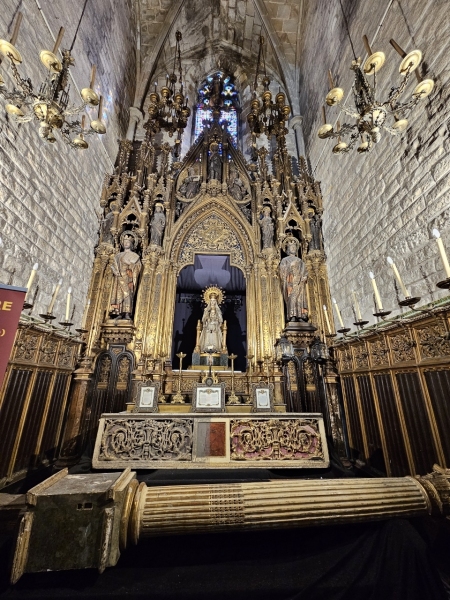
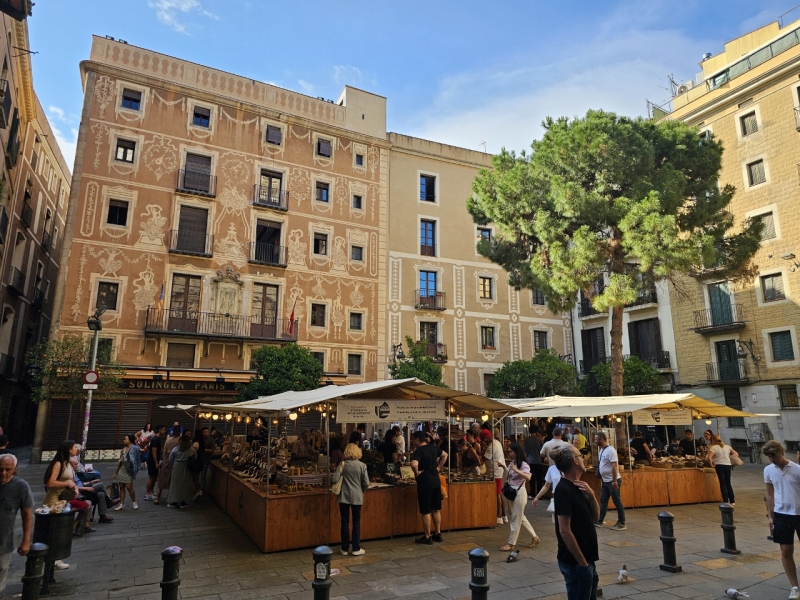
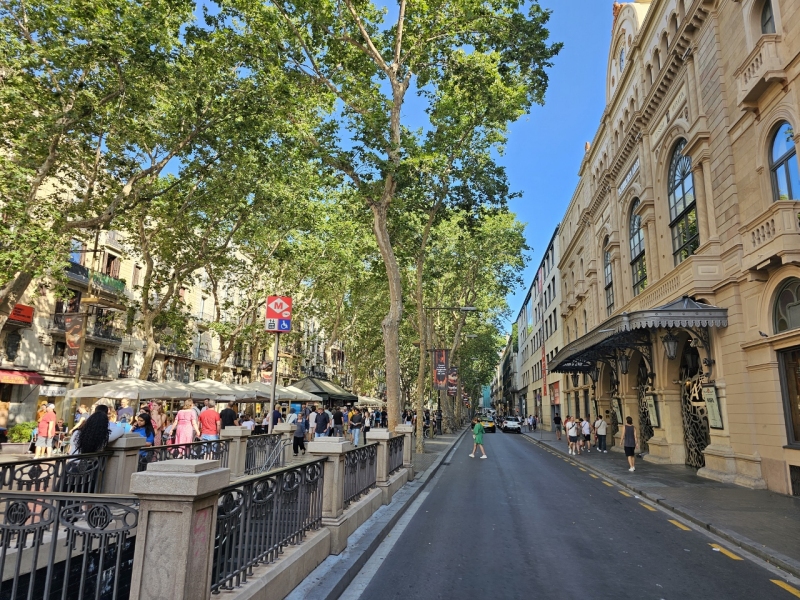
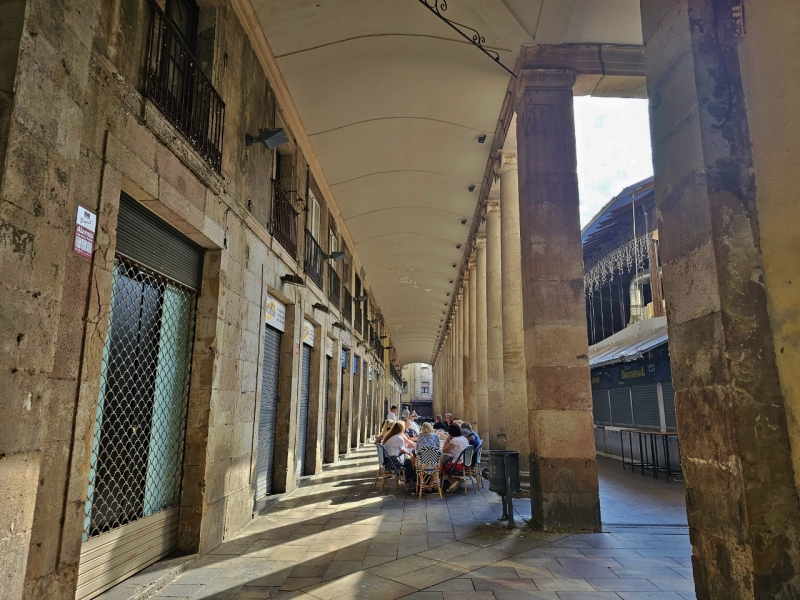
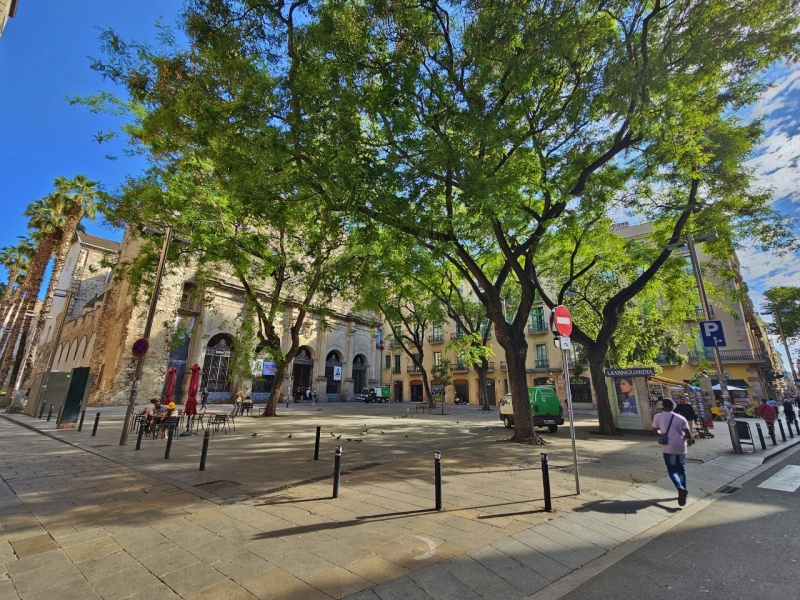
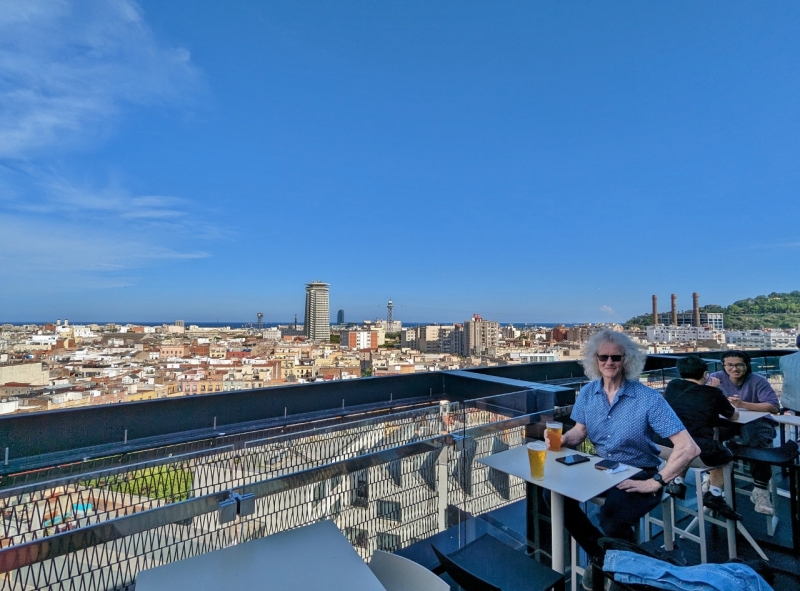
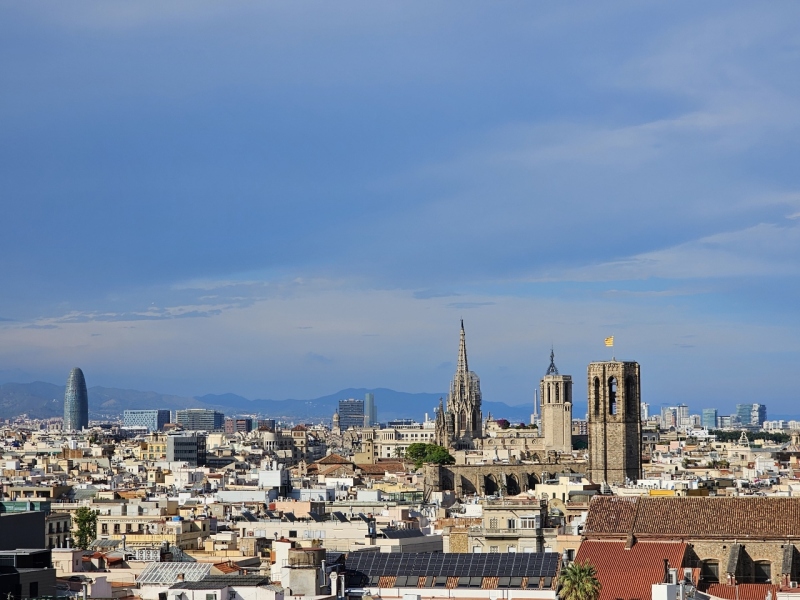
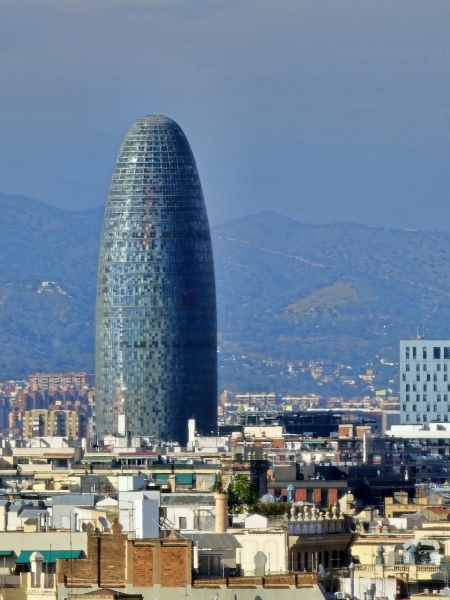
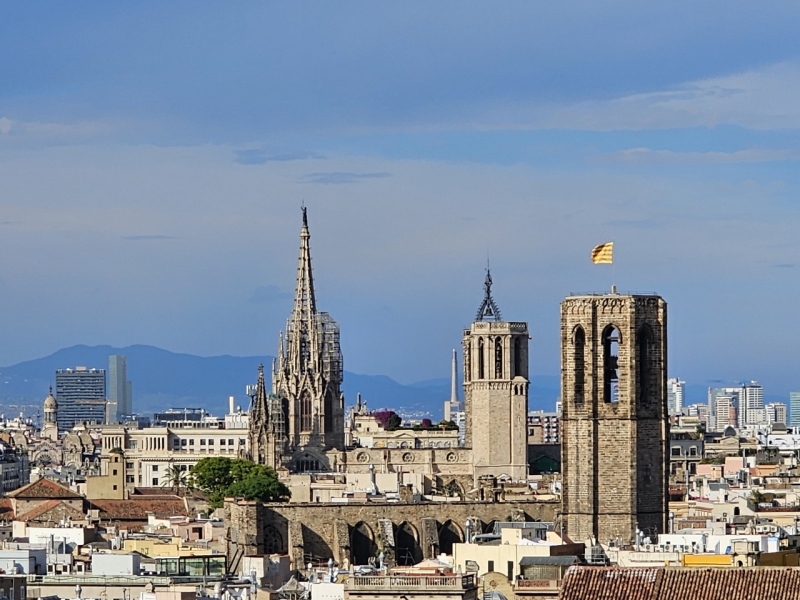
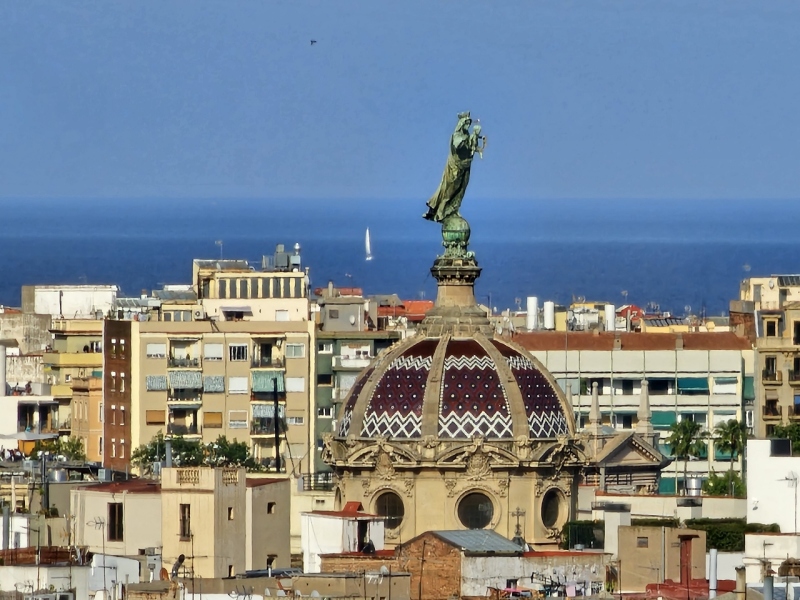
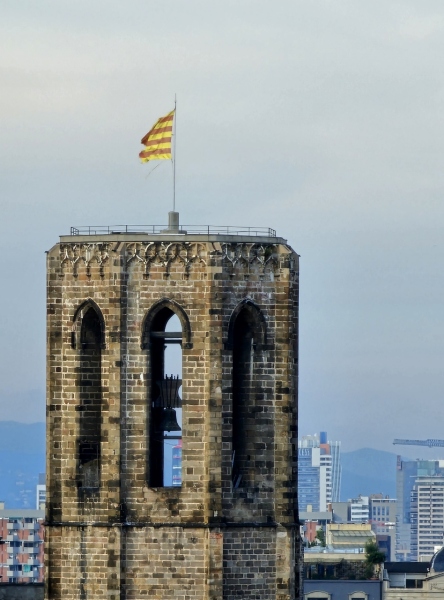
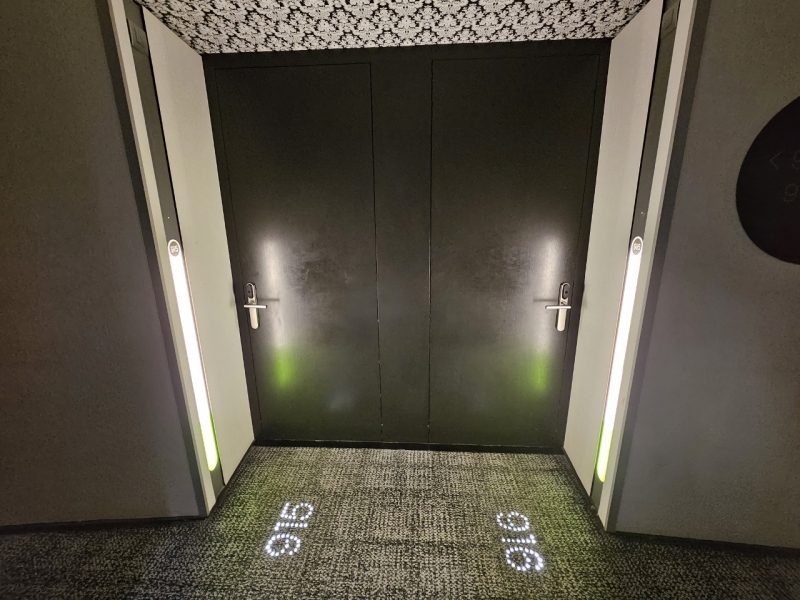
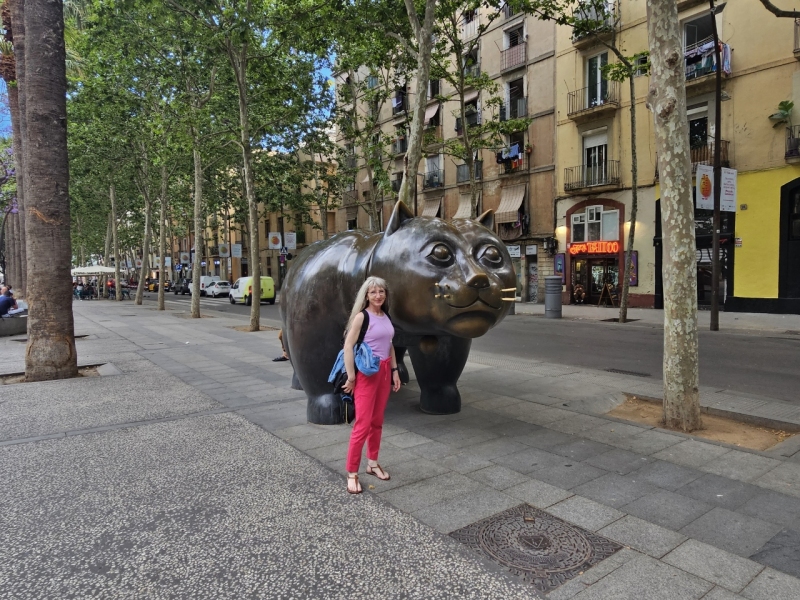
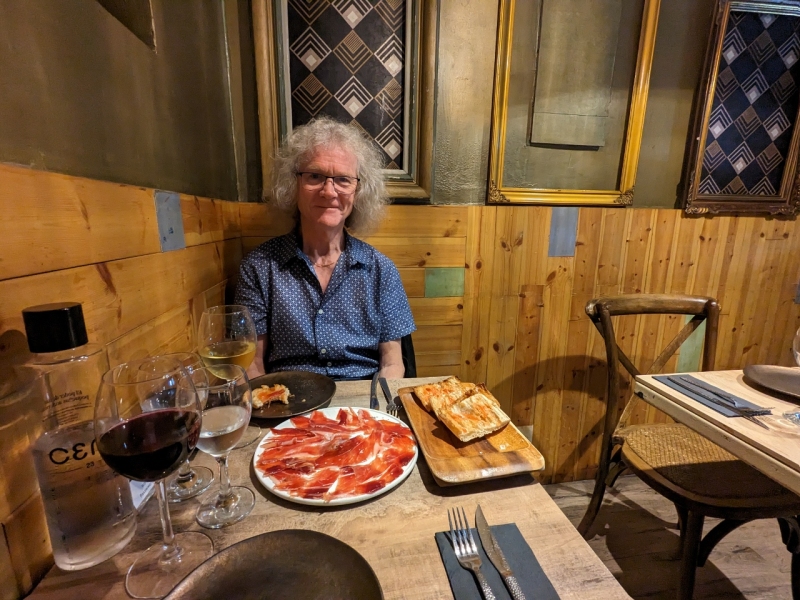
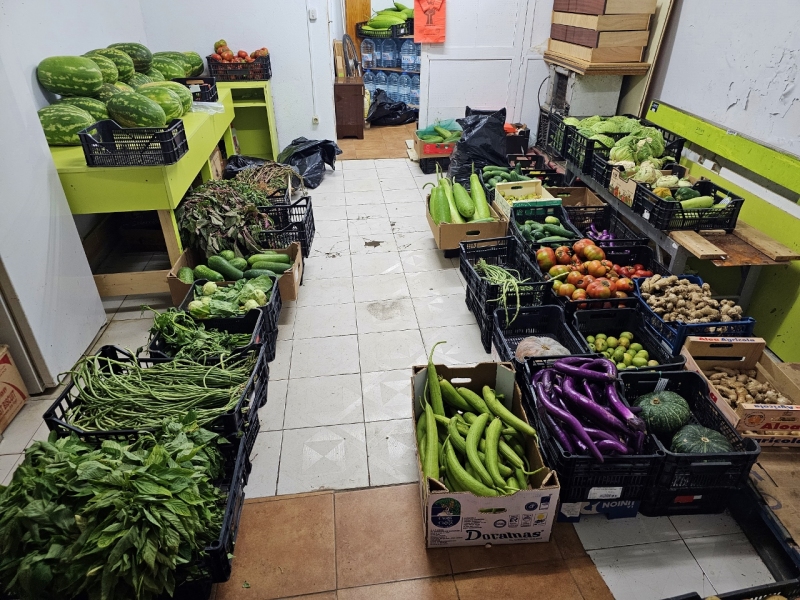
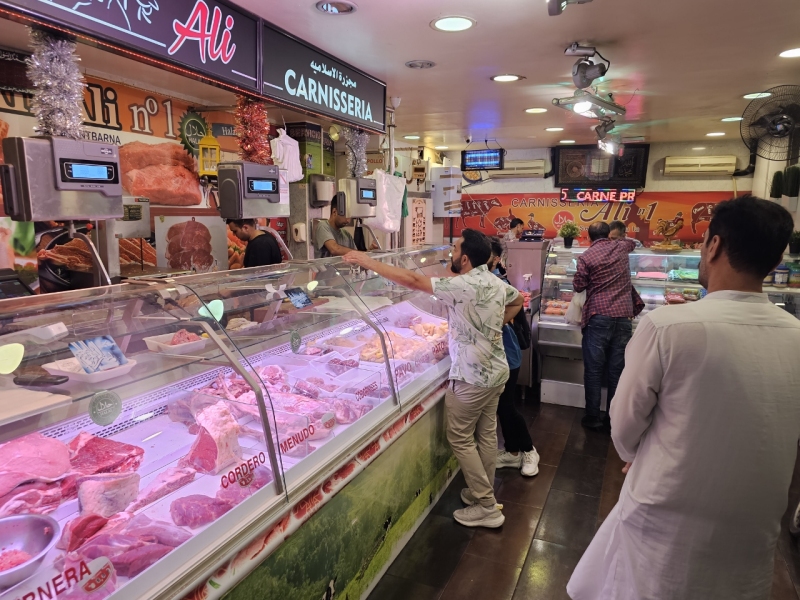
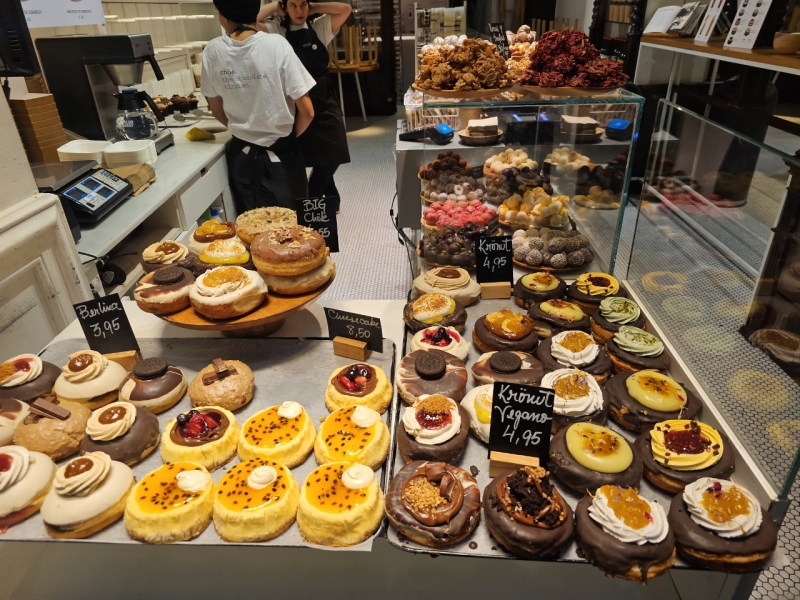
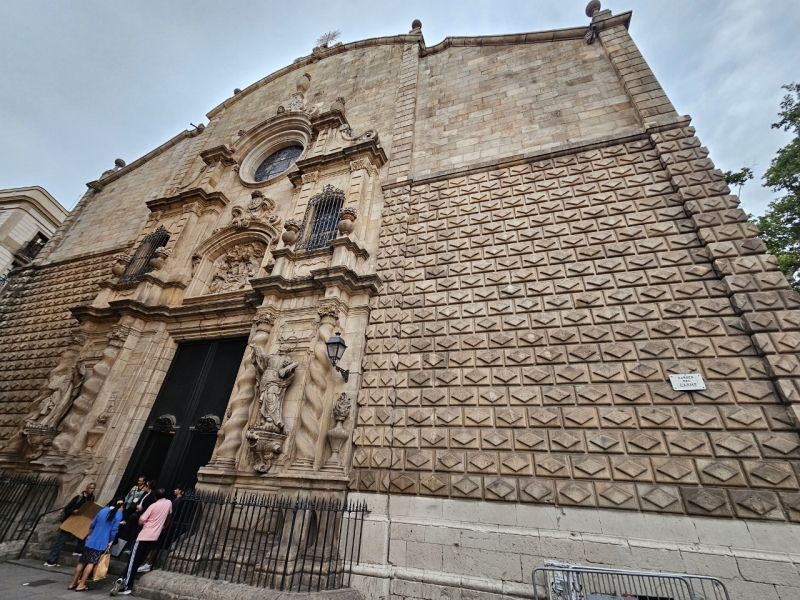
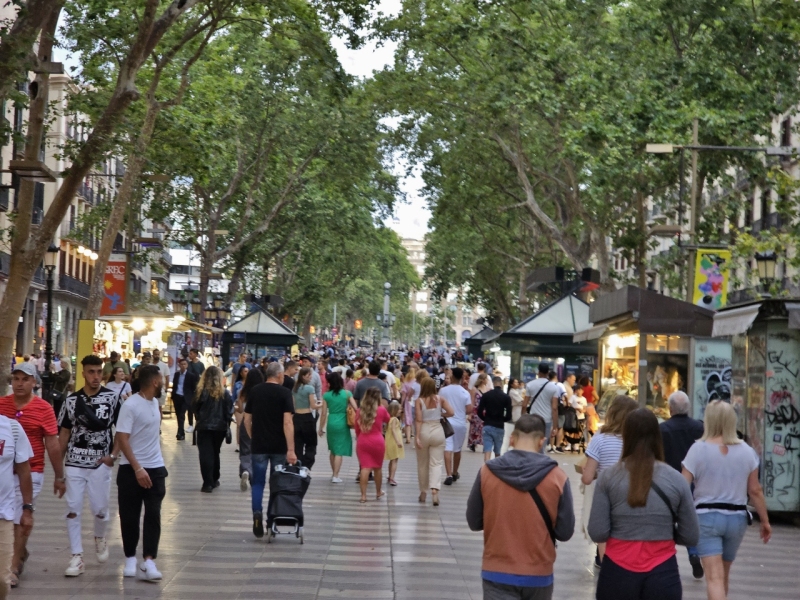
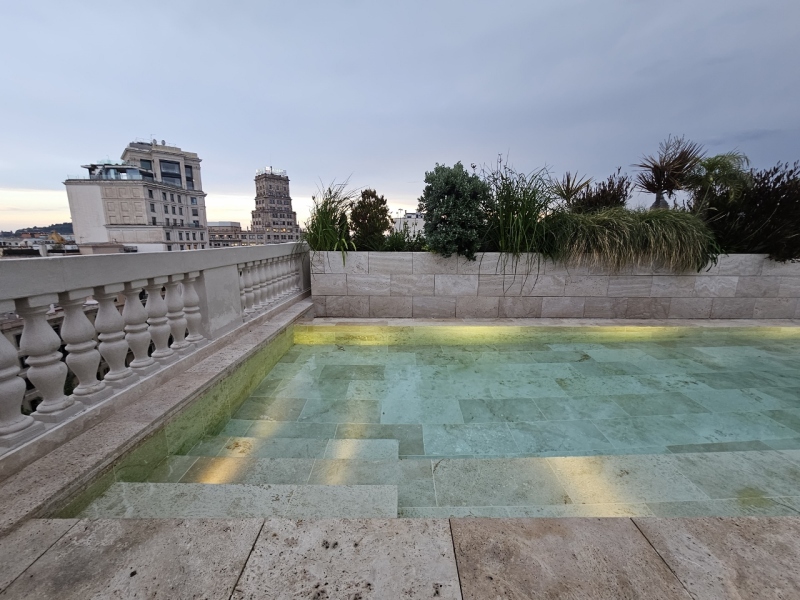
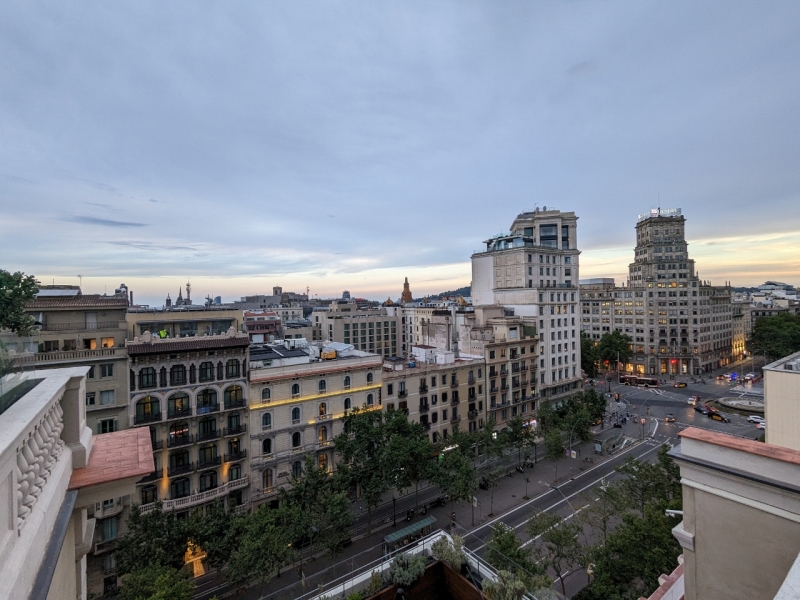
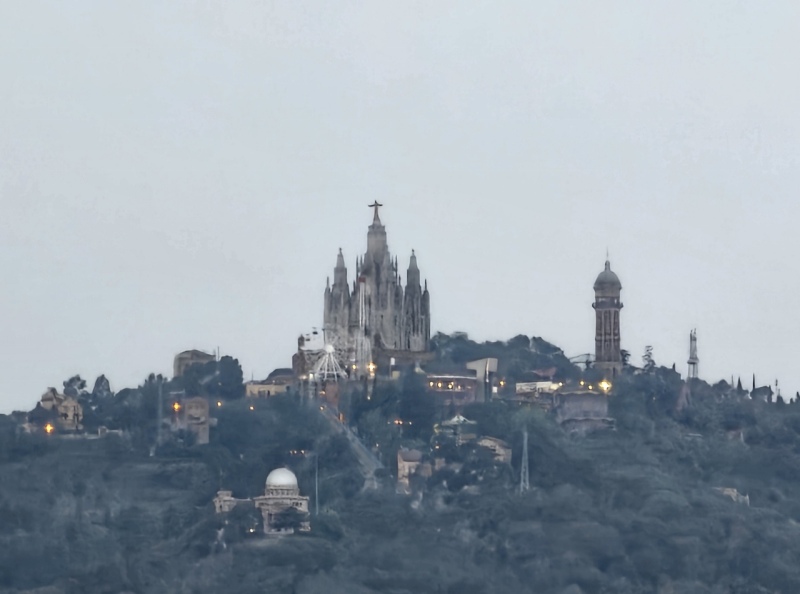
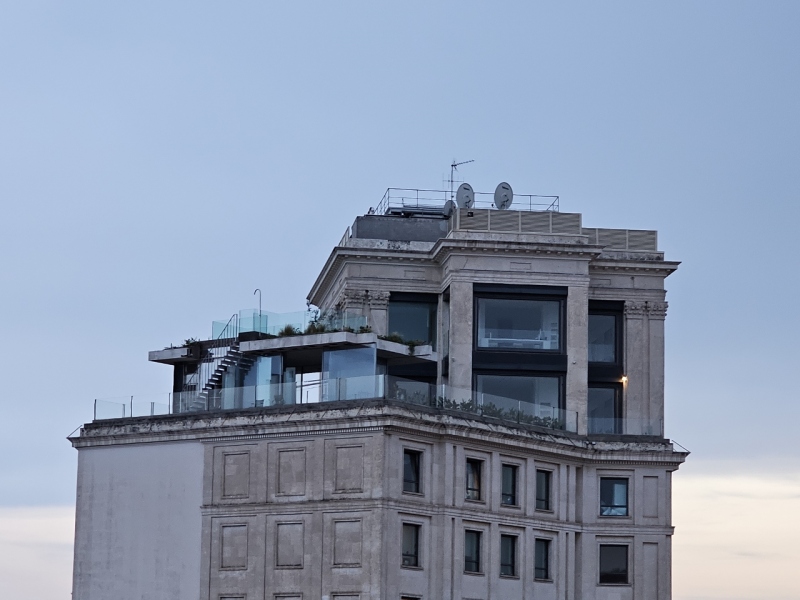
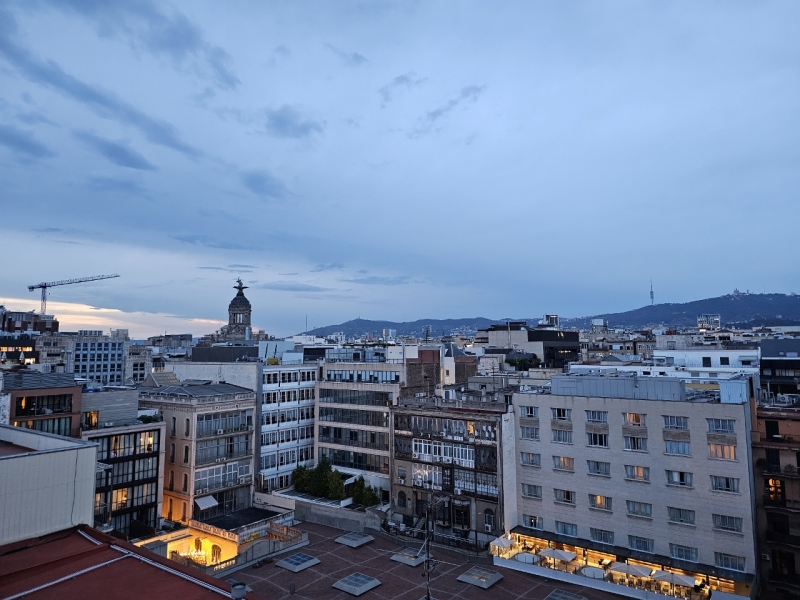
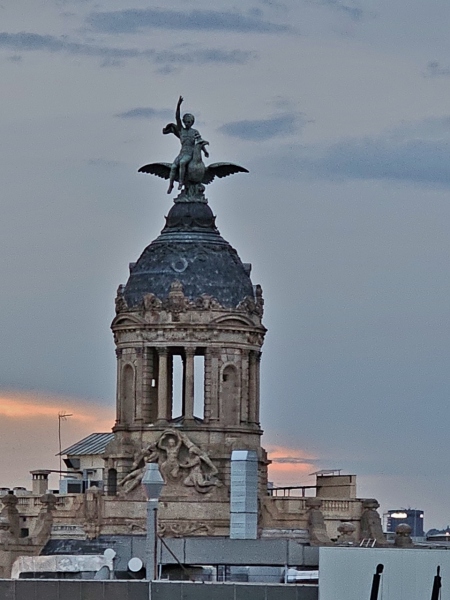
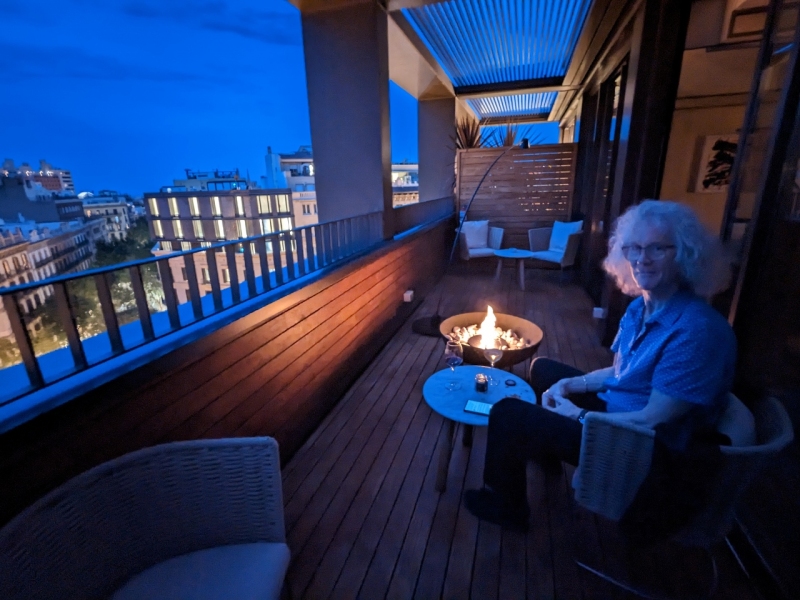
Thanks for great photos and information about Barcelona. My wife and I stayed there very briefly before boarding a cruise ship and loved it. Neat city.
We totally agree John. Barcelona is a world class city and it’ll be tempting to return for next years America’s cup racing.